As someone who loves to photograph unusual architecture, Mill Basin is a mecca. If Malba is the Beverly Hills of Queens, Mill Basin is the South Beach of Brooklyn, full of bubbling fountains, soaring porticos, and bizarre statuary. This man-made, claw-shaped peninsula is lined with pastel palazzos and ersatz chateaus, a dizzying jumble of architectural styles. But it wasn’t always this way.
EQUANDITO
The Canarsie Indians’ name for the patchwork archipelago of islands and wetlands that includes present-day Mill Basin was Equandito, which, besides sounding like a certain breakout hit from 2017, means “broken land.” In 1664, the Canarsies sold the land to the Dutch, who incorporated it into Flatlands, one of the five original towns of Brooklyn.
In 1675, Jan Martense Schenck purchased the island, which included a share in the island’s gristmill (hence the name), and built his house there.
Remarkably, the house that Schenck built, one of the oldest in the city, can still be seen today, though not in Mill Basin. In 1952, the Brooklyn Museum purchased and dismantled the structure, later rebuilding it inside, its gabled roof truncated to a deep red frustum to accommodate the room’s ceiling.
The island remained rural for the next two hundred years, a prime spot for oystering, clamming, and crabbing. It wasn’t until 1890, with the construction of an iron smelting plant, that the island began gradually morphing into the peninsula it is today, connected to mainland Brooklyn.
The push of industry led to the creation of ports and dry docks, and soon, the wetlands and streams of Mill Island (now Mill Basin) were filled in. Heavy hitters like Gulf Oil and National Lead took advantage of the “trifling” costs of doing business on Brooklyn’s New Industrial Harbor.
Plans for a train line that would connect Mill Basin to the rest of Brooklyn never came to fruition, however, and by the 1950s, most manufacturing interests had moved on.
A progression of residential development ensued, with small, brick bungalows being replaced by modest single-family homes, and those, in turn, being replaced with the cacophony of post-modern architectural wonders that typify the neighborhood today.
For a while, 2458 National Drive was Brooklyn’s most expensive home, listed for a staggering $30 million in 2013. The house was built by John Rosatti, the car dealership magnate with close ties with the Colombo crime family. In the 1990s, he was considered the wealthiest mobster in New York City. Rosatti made his initial fortune with the Plaza Auto Mall in Brooklyn, and the front of the house looks like a cross between an Acura dealership and a suburban office complex.
Rosatti has since branched into the food service industry, opening several restaurants and founding the BurgerFi chain. I had always thought that BurgerFi was some sort of internet cafe meets burger bar concept, but apparently, the name is short for BurgerFication of the Nation, which is so obvious I can’t believe I missed it.
This excerpt from the bio on Rosatti’s website is something else:
While continuing to oversee his ever-expanding automobile and restaurant holdings, John Rosatti, a successful businessman who has, by all accounts, earned the right to play as hard as he works, also actively pursues his other passions in life. These include world travel, luxury yachts, cars, and planes. John Rosatti’s new Gulfstream G400 is a private jet that has no equal in performance or luxury in its class. Not content to only play in the skies, John Rosatti is also the proud owner of the 162-foot super-luxury Christiansen mega yacht, Remember When. Unparalleled in its extravagantly-appointed custom-designed interior, this stunning megayacht is where John spends much of his time managing his multiple business ventures, as well as seeing the world with his family and friends. When he makes it back to his home in Palm Beach County, Florida, you’ll find John cruising in one of his two brand new Rolls-Royce Ghosts, both of which are, of course, customized to the hilt.
After being hit with a six-figure lawsuit for building his boat docks on top of protected wetlands, Rosatti sold his Mill Basin home for a paltry $3 million in 1996. The new owner was Galina Anisimova, the ex-wife of one of Russia’s richest men and mother to Anna Anisimova, the “Russian-American Paris Hilton.”
Like Rosati’s twin Rolls-Royces, the home was customized to the hilt. Anisimova brought in 15 types of marble and over 4 tons of Bulgarian bronze (my favorite kind) to warm up the 14,000-square-foot mansion. Highlights include the million-dollar circular meditation room with seating for ten and one of only five Ferrari pianos in the world.
Also included was the 8,000 sq ft guesthouse next door.
It turns out there are not enough oligarchs or cartel bosses out there interested in spending $30 million on a home/multiplex in outer Brooklyn, and the mansion went through a series of price cuts. The house was relisted for $17 million, then $13 million, and finally sold for $10 million in 2018. The buyer, however, was Anisimova’s son-in-law. Recently, the home sold for $7.2 million to an undisclosed buyer. Guest house not included. I went to see what was happening, but despite the unmanned security booth, I didn’t feel comfortable getting any closer.
SPECIAL DELIVERY
In a neighborhood known for its over-the-top buildings, the house at 139 Bassett Avenue still manages to stand out. The gray stucco facade is adorned with abstract geometrical sculptures, flocks of silver birds, and a glass brick gable. Giant blades of red metal grass sprout from the front yard beside a coterie of copper children scampering between the dwarf pines. White obelisks flanking the garage and a row of four flagpoles complete the look. The house was built in 1990 by Anthony “Gaspipe” Casso, a Lucchese family underboss whose legal troubles prevented him from ever stepping foot in his dream home.
Shortly after the house was completed, the architect, Anthony Fava, sent an invoice. Living up to his reputation as a "homicidal maniac,” Casso had Fava murdered. The hit was just one in a long list of crimes that eventually sent him to prison in 1993. Casso died from COVID-19 in 2020 while serving a 455-year sentence for racketeering, extortion, and murder.
Arguably, Casso wasn’t even 139 Bassett’s most interesting owner. That distinction belongs to the Turano brothers, Michael and Gerard, and their mother, Dorothy.
You might ask yourself, how could two gynecologist brothers and their community board district manager mom afford a 7,000 sq foot waterside mansion, a Bentley, and a 39-ft yacht named Special Delivery? The answer to that lies with former State Senator Carl Kruger, who was forced to resign from office before pleading guilty to federal corruption charges. By accepting bribes in return for political favors, Kruger earned himself seven years in prison. Those bribes, more than $1 million worth, went straight into an account controlled by Michael Turano that helped pay for things like the aforementioned yacht, an ice cream room, and a curved glass elevator.
In what is perhaps the biggest affront to the citizens of New York City, Kruger secured NYPD parking placards for both brothers, allowing them to park their Bentley with impunity.
Senator Kruger spent most of his time in the Mill Basin home. While he let people believe Dorthoy was his partner, he really was carrying on a secret relationship with her son, Michael. Perhaps to keep his cover, Kruger was one of only eight Democratic senators to vote against New York State's Marriage Equality Act in 2009. Michael Turano was indicted as a co-conspirator and spent two years in prison. According to a recent property record search, Michael remains the house’s owner.
SIGHTS AND SOUNDS
To be honest, there isn’t too much going on in this week’s field recording. Fittingly, most of the sounds involve residential maintenance activities - power washing, re-asphalting, etc. There is a little bit of a grandmother chiding her grandson and a snippet of Russian gossip thrown in for good measure.
The pictures from this week are 90% houses because that’s what there is to see!
FEATURED PHOTOGRAPH
Irving Underhill was a commercial photographer working in New York City during the early 1900s. Underhill opened his studio at 17 Park Place in Manhattan in 1896. Like Percy Loomis Sperr, Underhill documented the entire city and “took a particular interest in capturing the cityscape, landmarks, tall buildings, and nautical scenes.”1
This panorama of the Mill Basin Shipyard was taken in 1919, a commission from the Atlantic Gulf and Pacific Company.
Ship Building - Wooden - Atlantic, Gulf, And Pacific Co., NY - BUILDING ARMY LIGHTERS. Panoramic view of the Mill Basin Shipyard of the Atlantic Gulf and Pacific Co., New York City. Shows lighters almost completed. 1919
Notes
Old Mill Basin is the tiny part of Mill Basin that existed before Mill Island was connected to the mainland. I didn't cover it in this edition since it’s listed as a separate neighborhood on the map I’m referencing for this project. It is so small I may never revisit it, but I’ve been getting some blowback from the border patrol, so I thought I would clarify.
Mill Basin holds the distinction of having the house furthest away from any subway line in Brooklyn. The site I Quant NY, crunched some numbers and determined that 2336 National Drive is located over 2 miles from the closest station. Fortunately, they have plenty of parking.
If you want to read more about the Carl Kruger saga, here is an NYTimes gift link to an article detailing the whole affair.
There are a lot of references to the McMansions of Mill Basin in books and newspapers. I’m not sure if these homes qualify as McMansions since the term implies a cookie-cutter construction that prioritizes saving money while at the same time projecting a faux luxury. These houses are many things, but cookie-cutter is not one of them. Also, when you are importing 4 tons of Bulgarian bronze, saving money is not a primary concern
On the other hand, many of these homes suffer from a steroidal approach to zoning, an architectural hypertrophy that strives to fill as much space as permitted (and sometimes more) on their modest lots. Also, the Neo-eclectic mixing of styles, a hallmark of McMansions, is in full force in Mill Basin.
I don’t know the answer; I’m not an architecture critic. Chime in below if you have any thoughts
https://en.wikipedia.org/wiki/Irving_Underhill#cite_note-ches-2

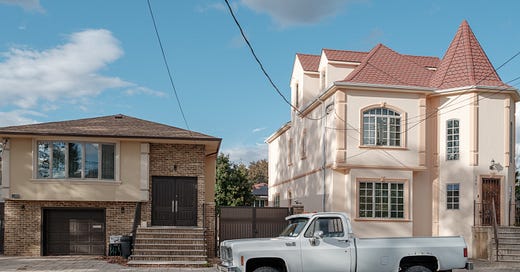

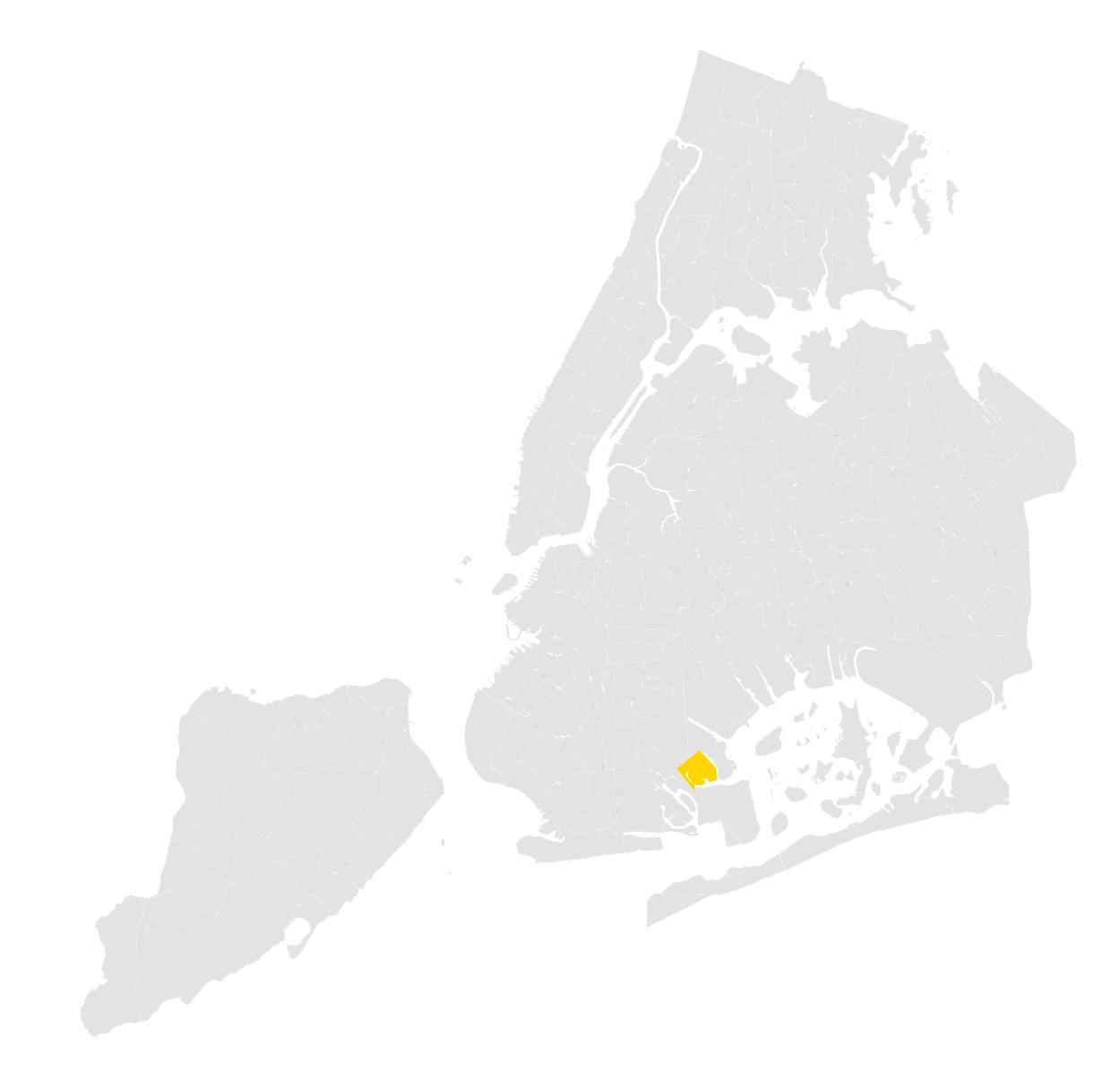
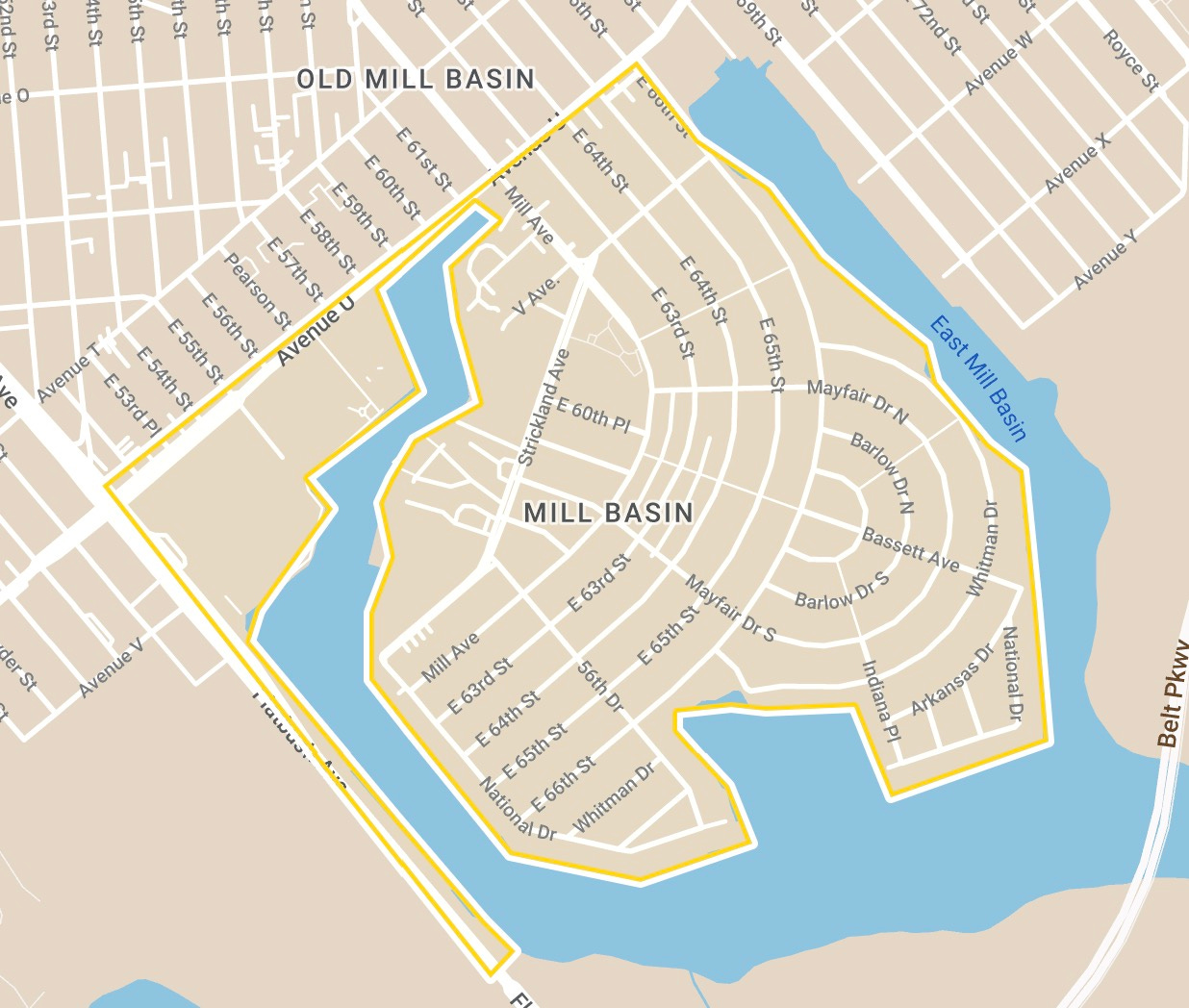
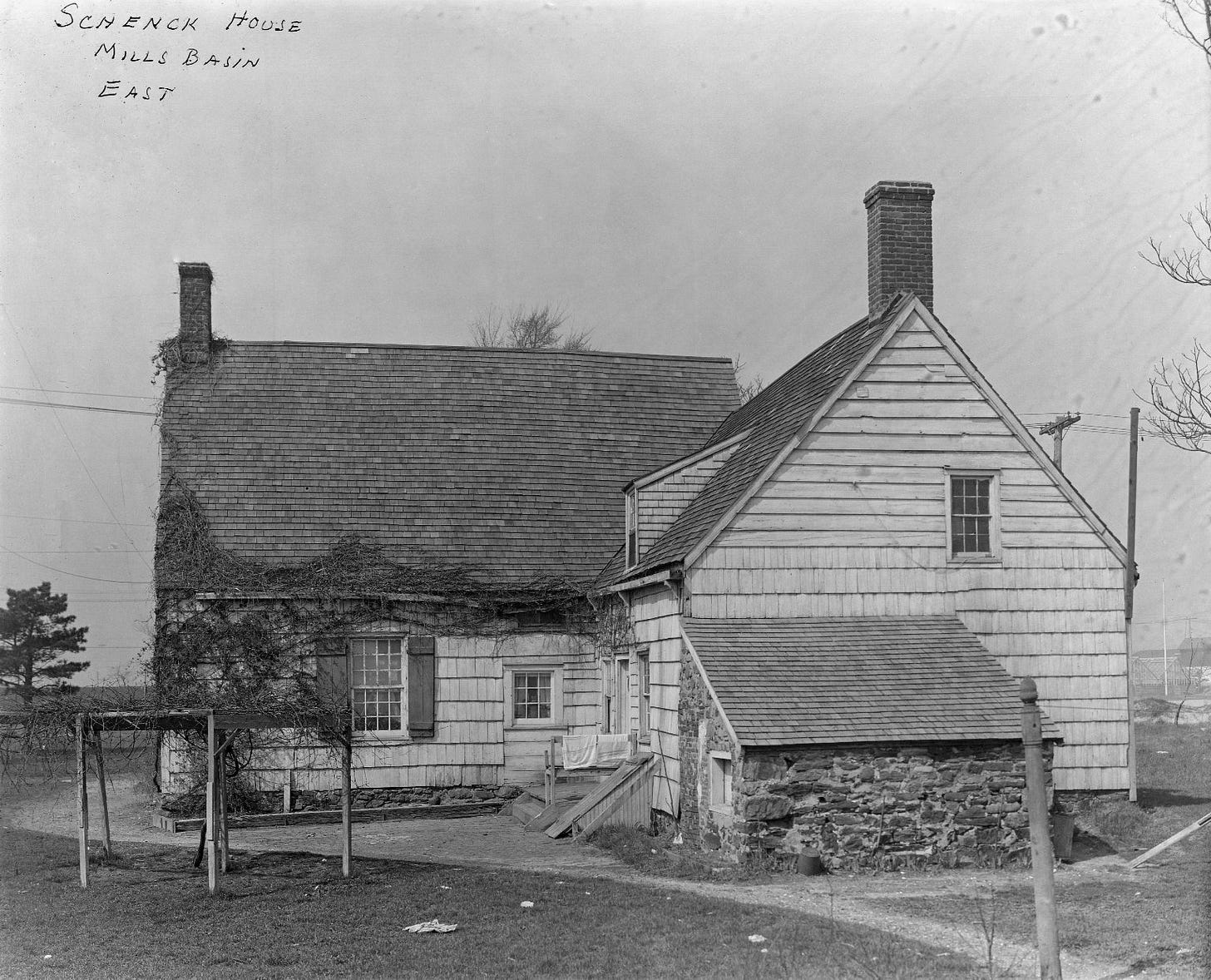
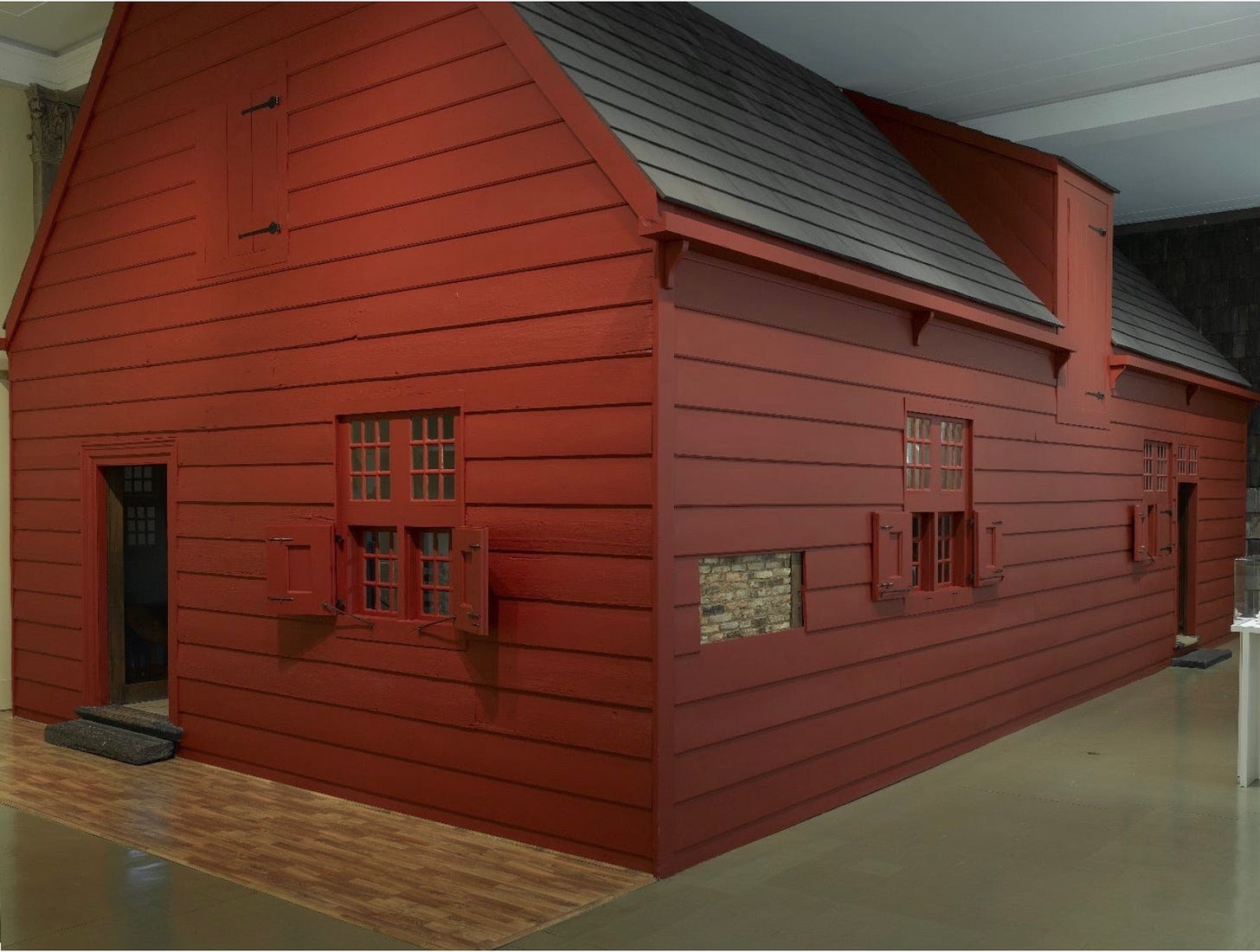


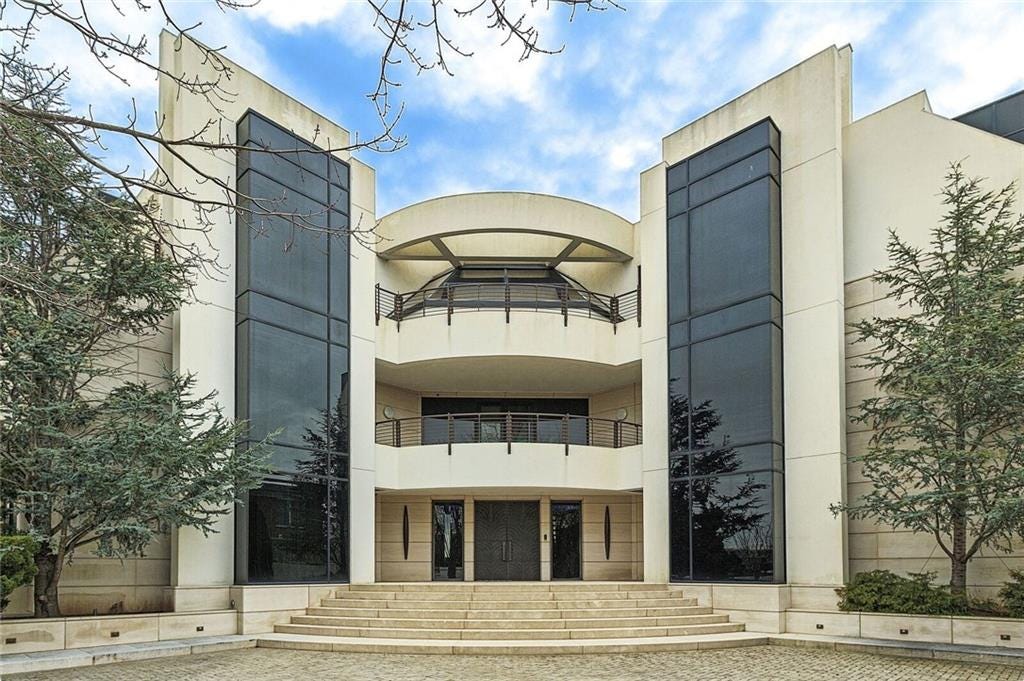

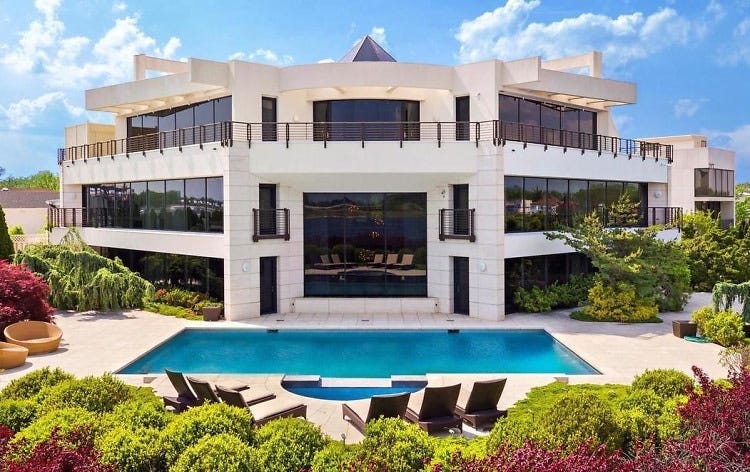
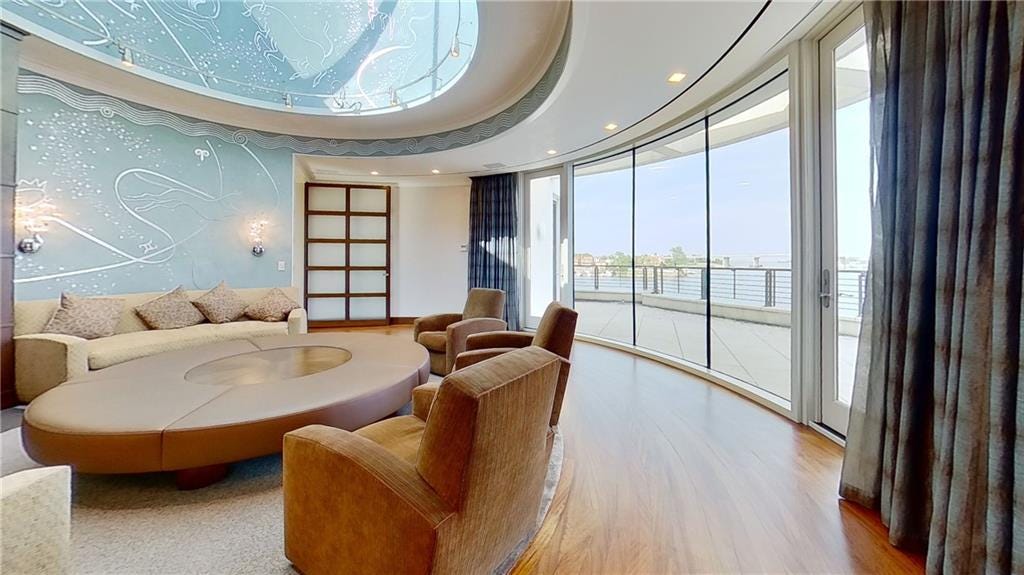
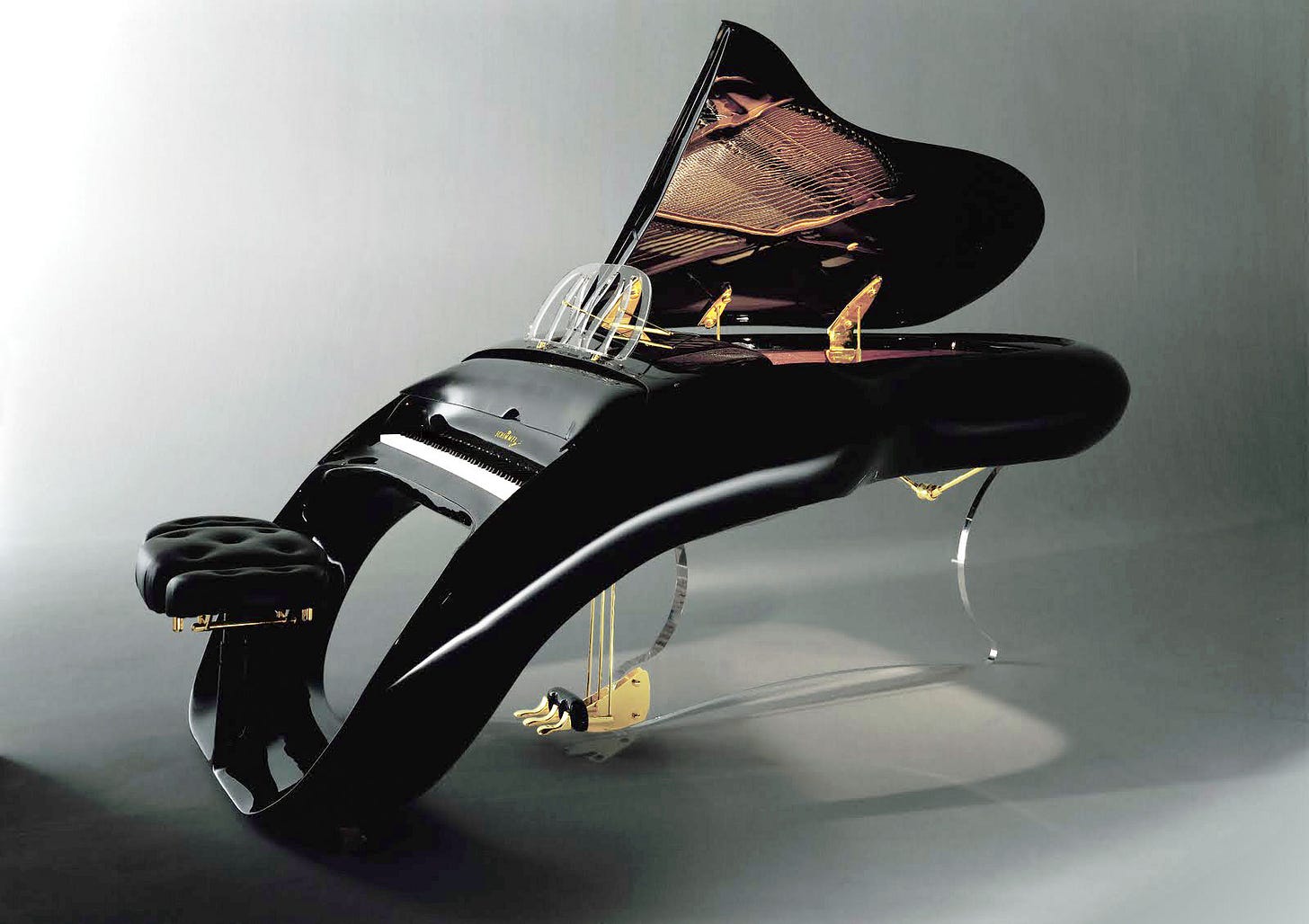
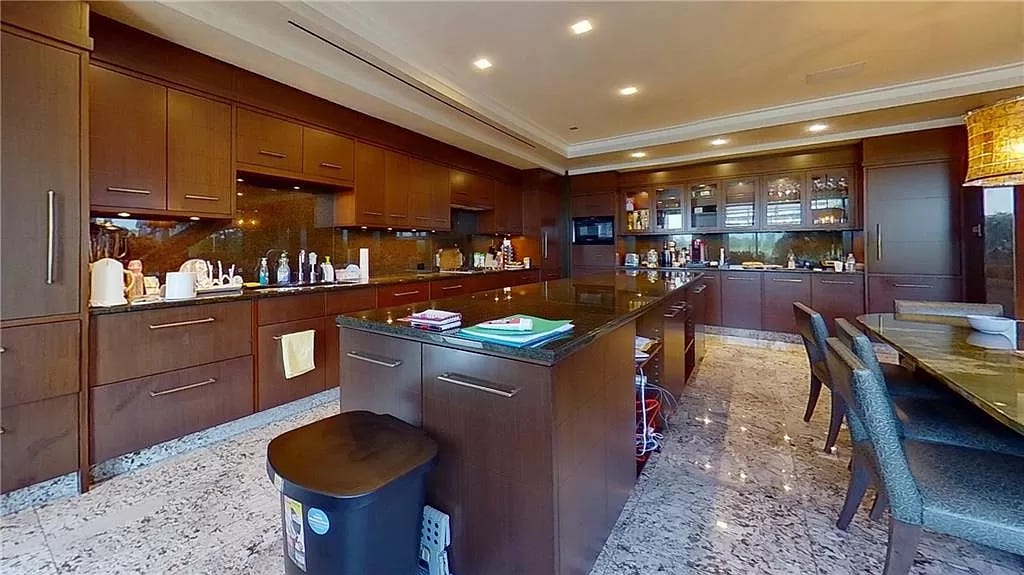
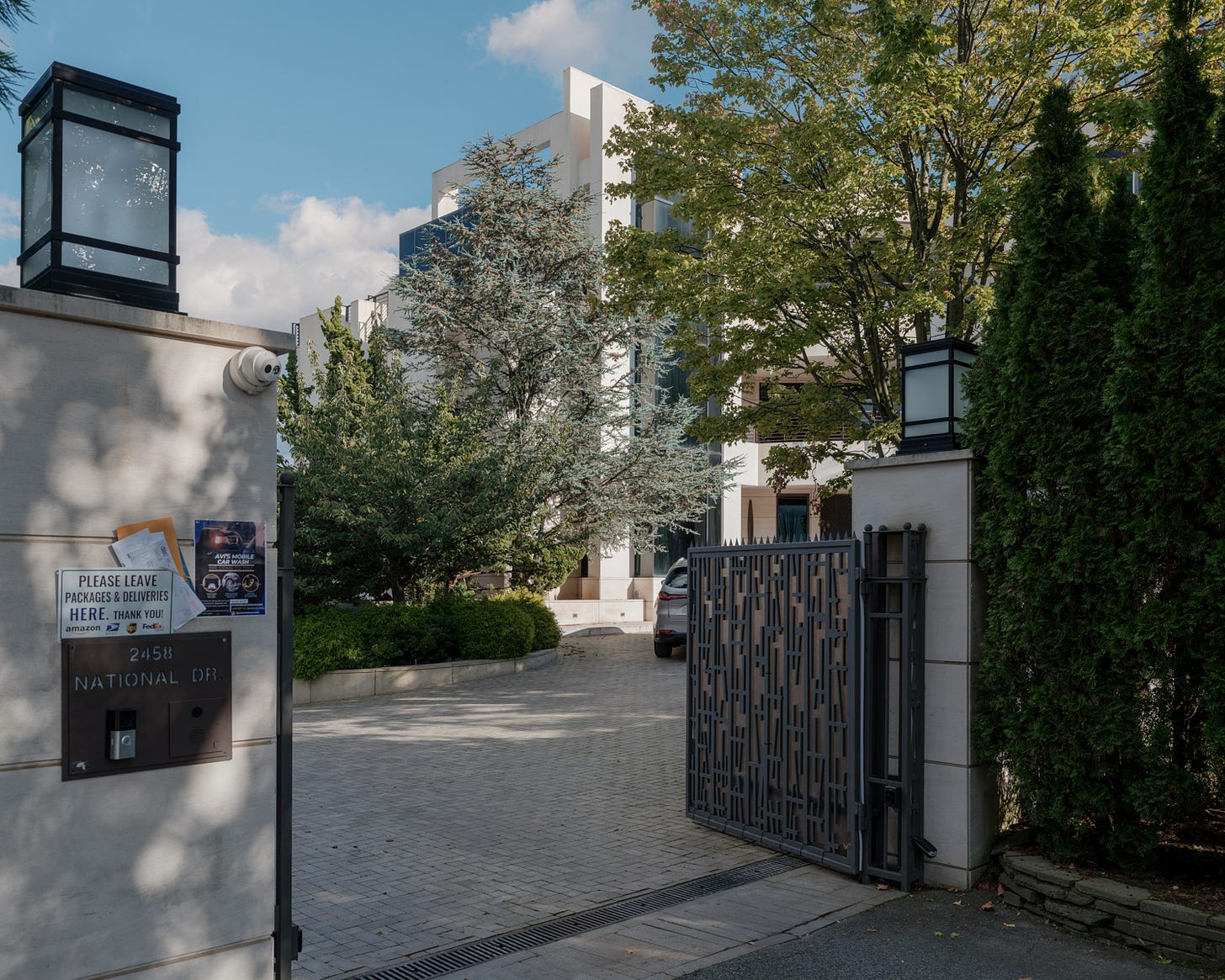
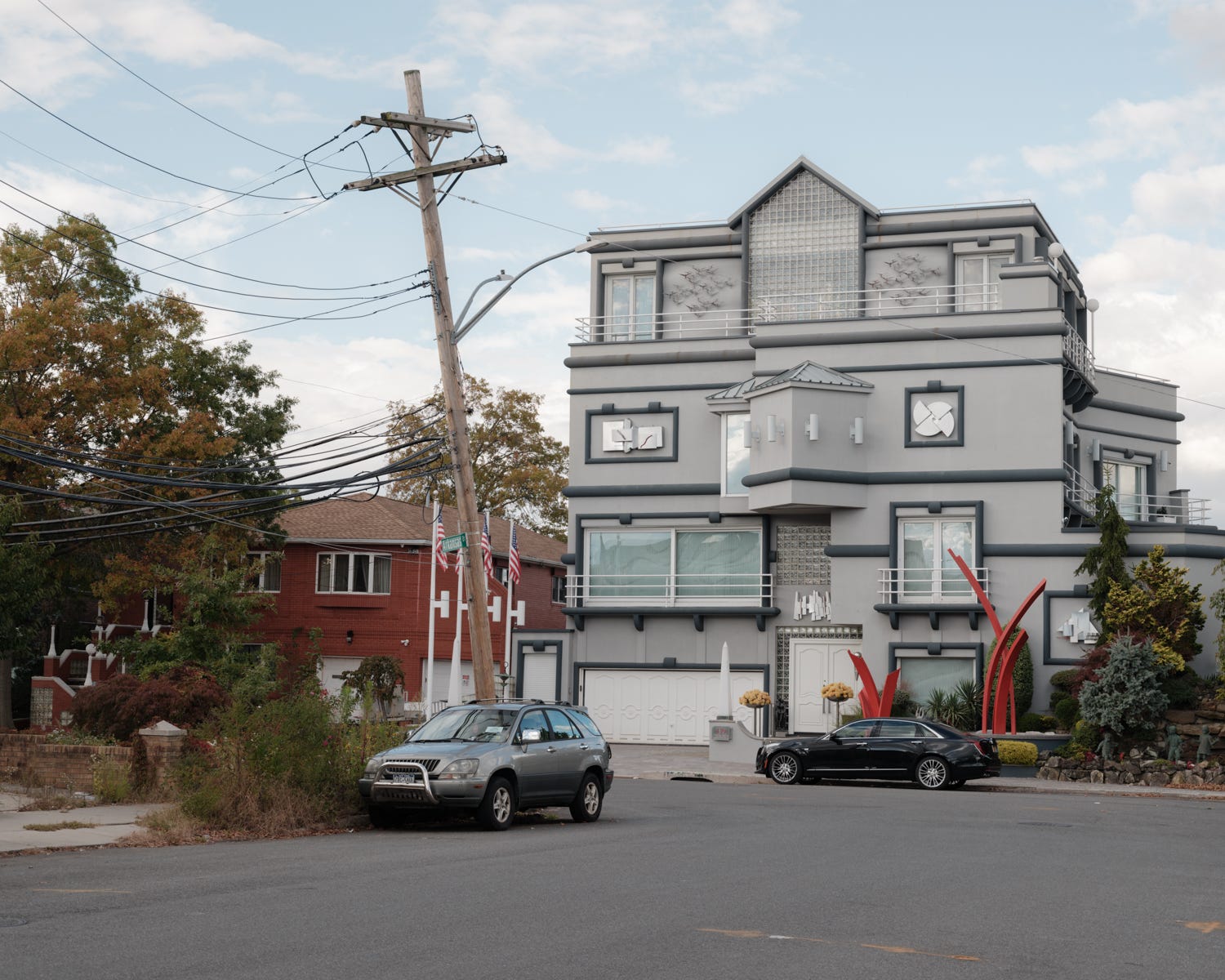
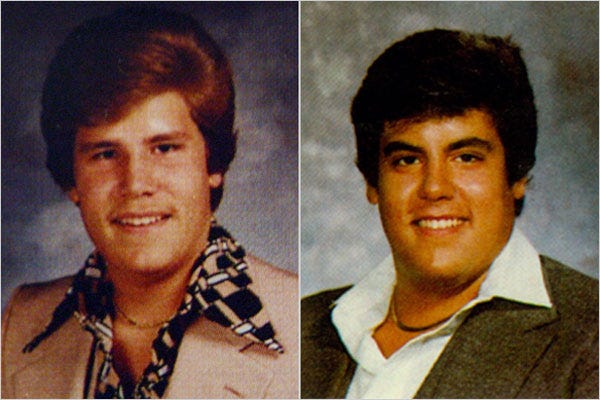
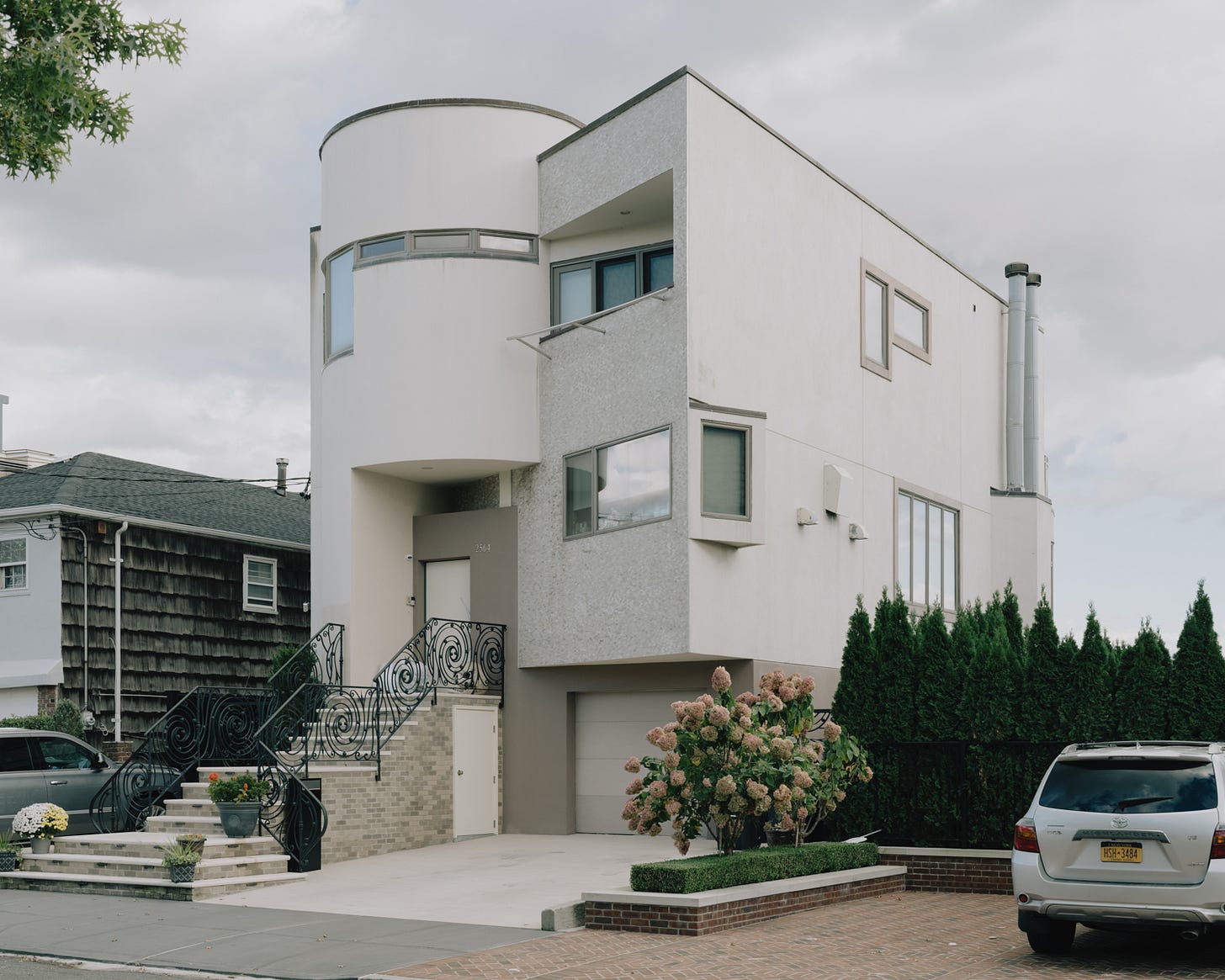
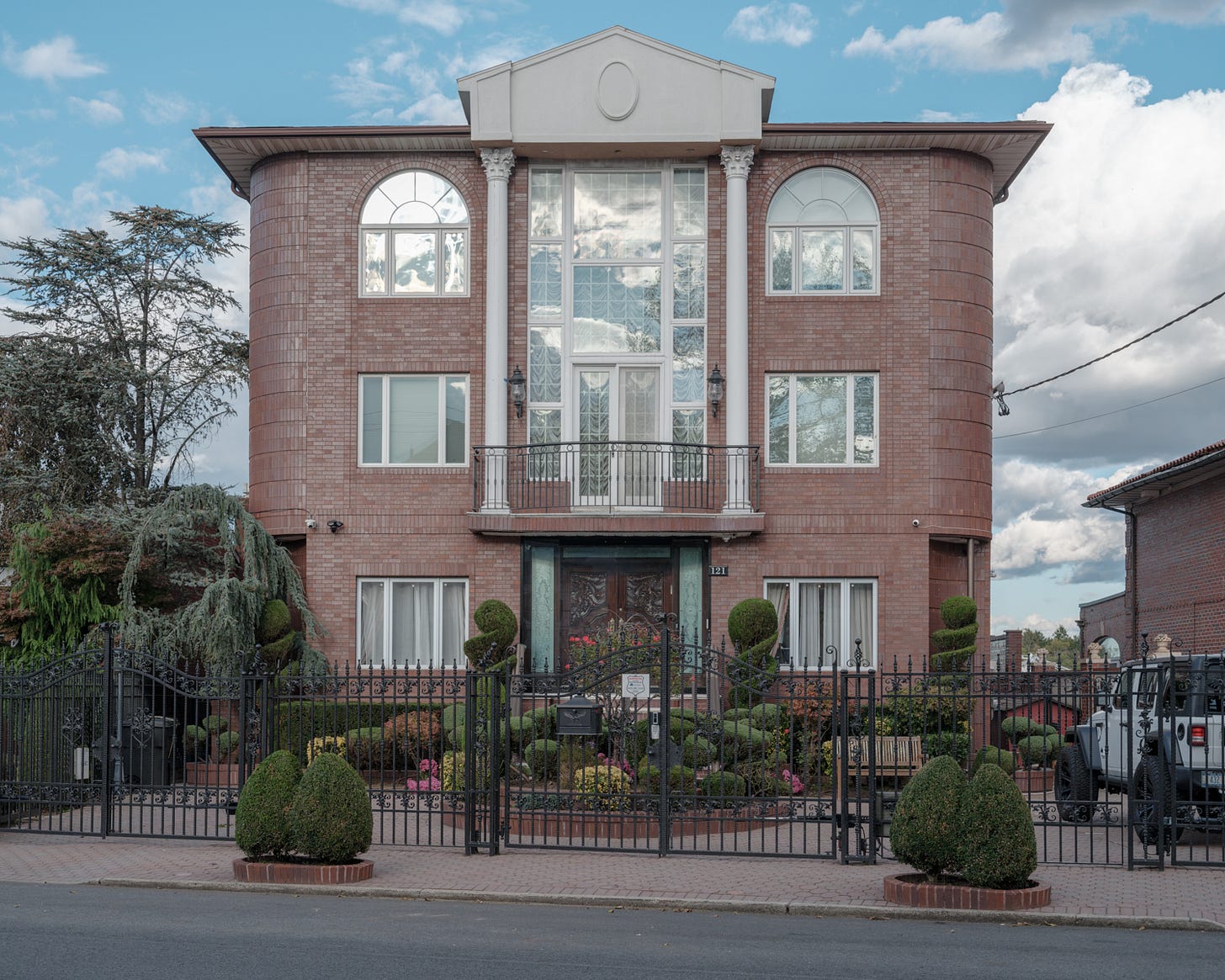
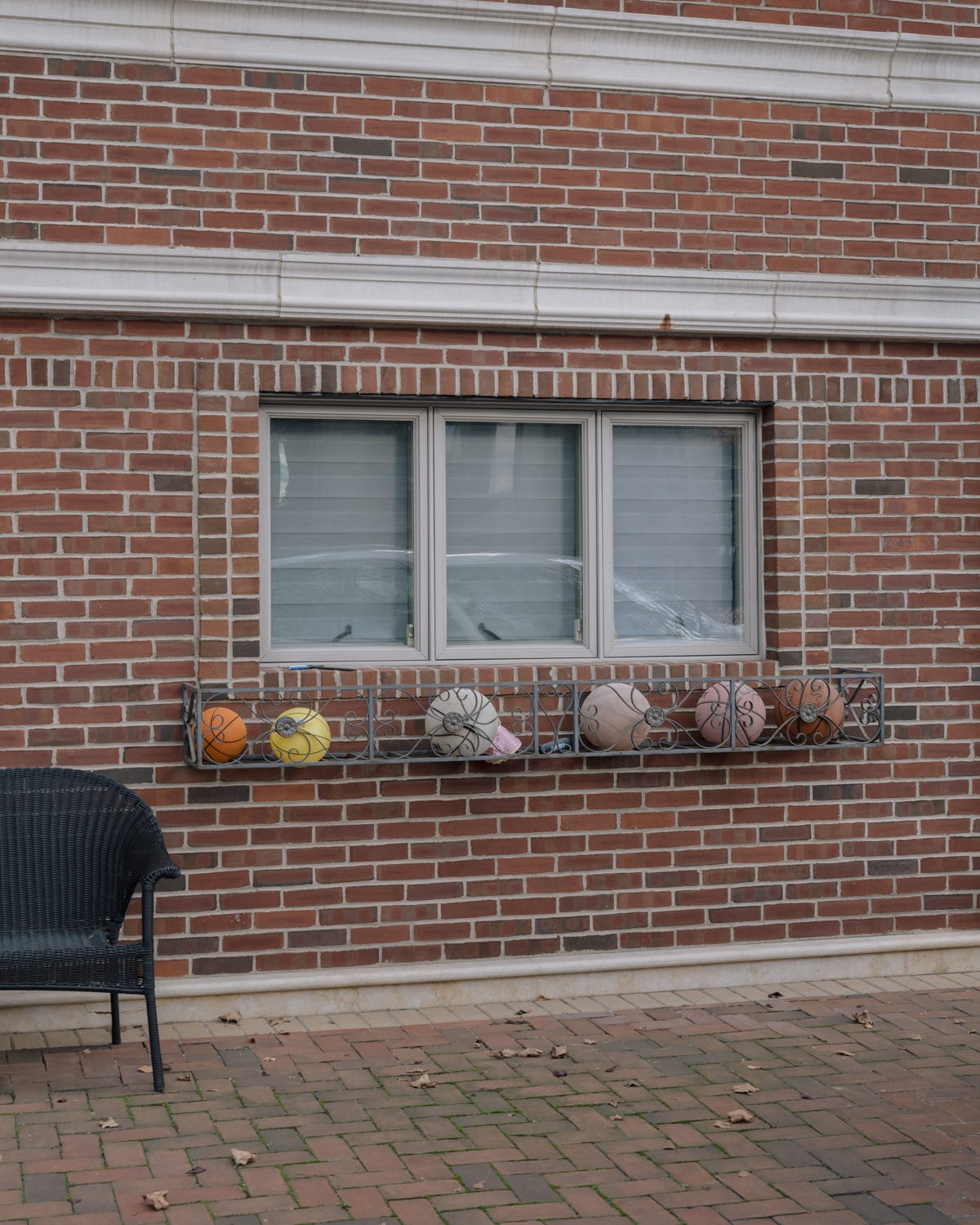
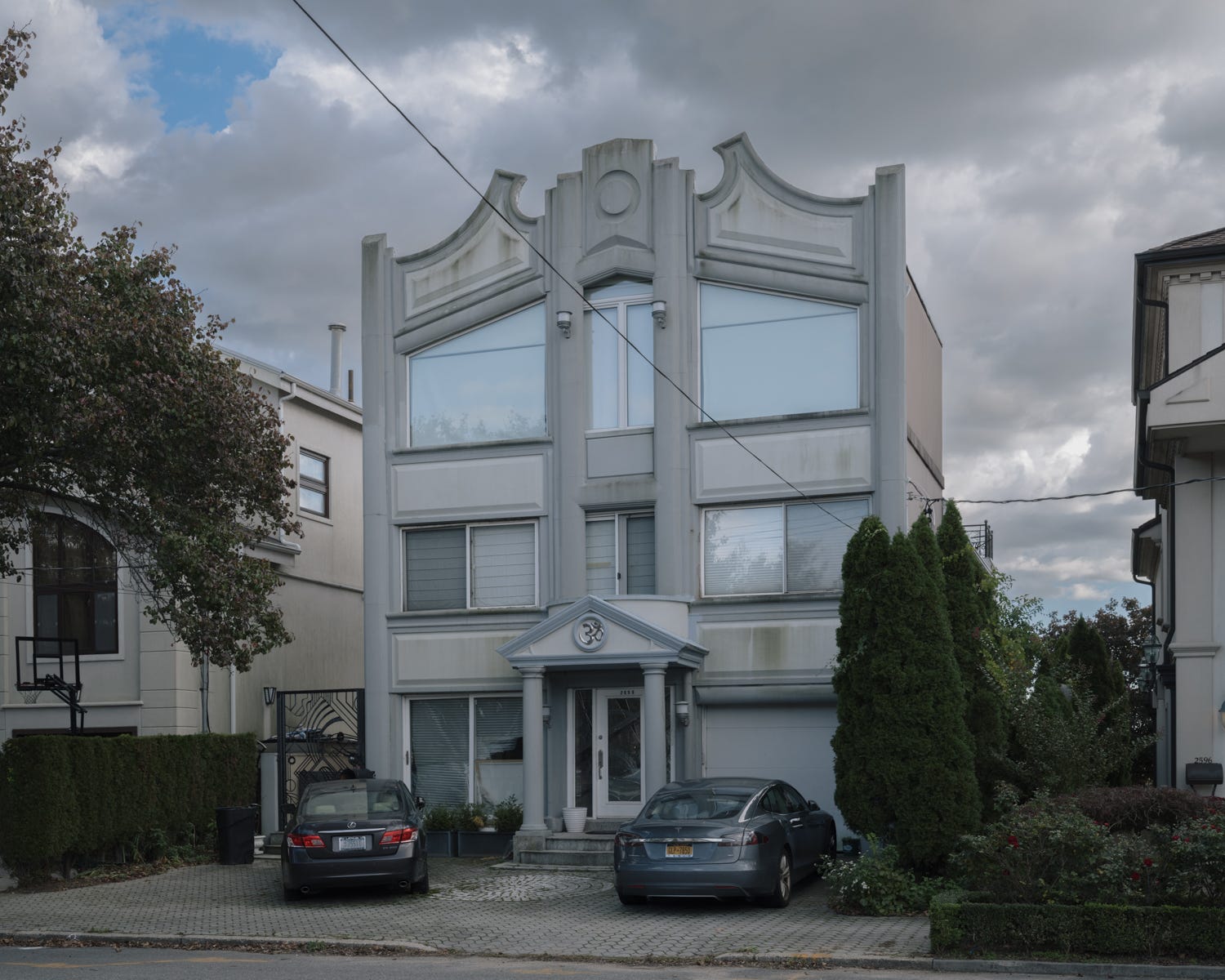
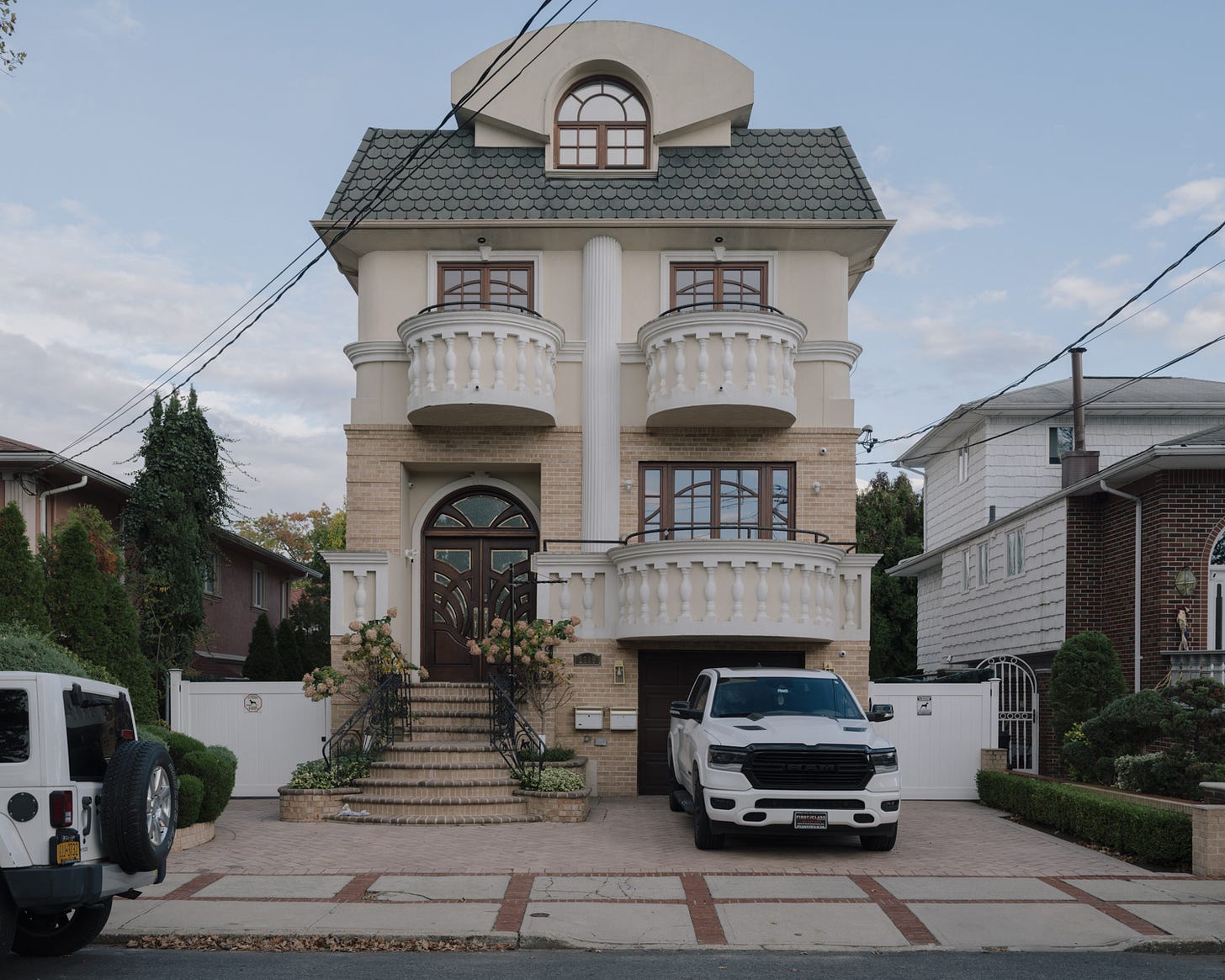


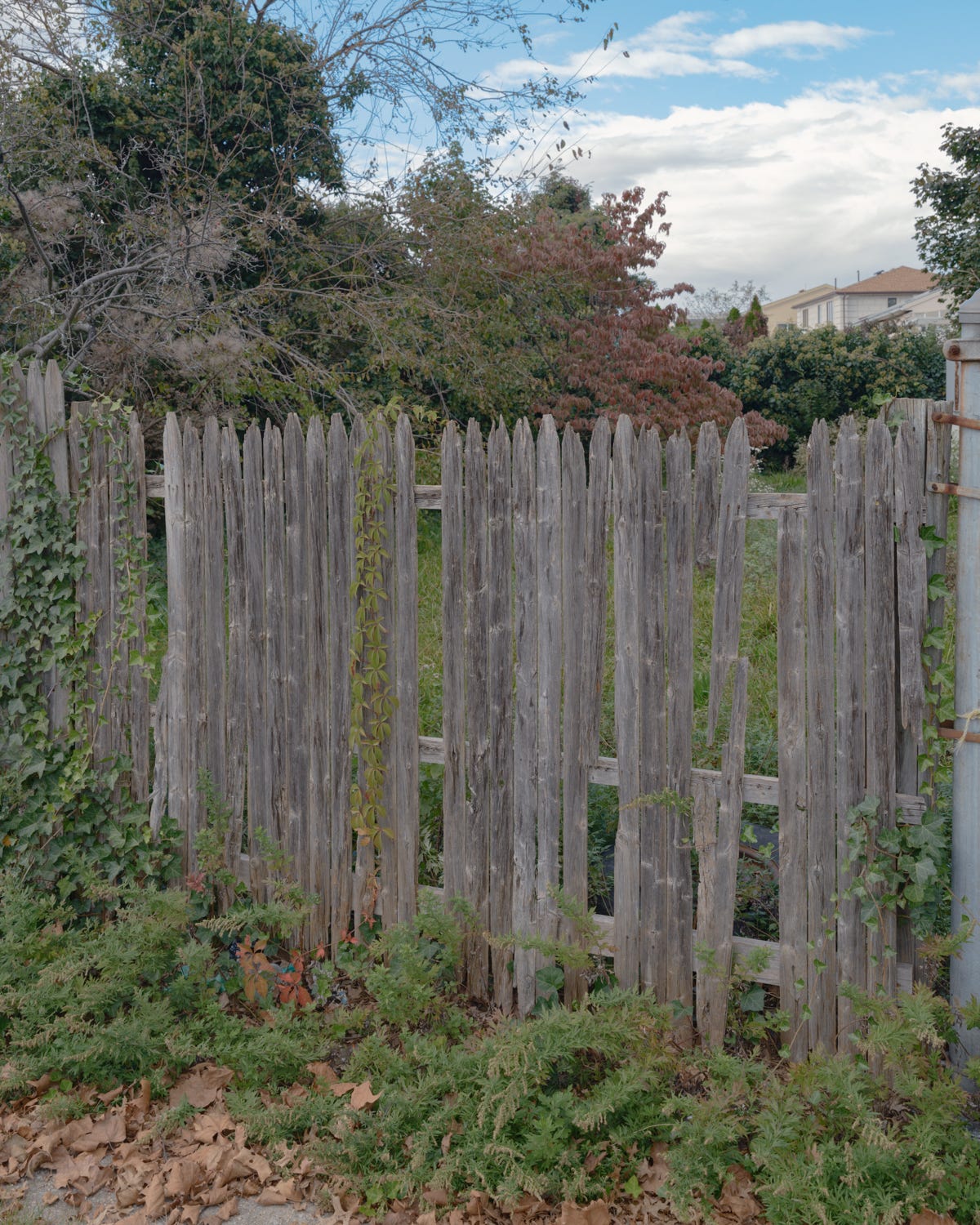
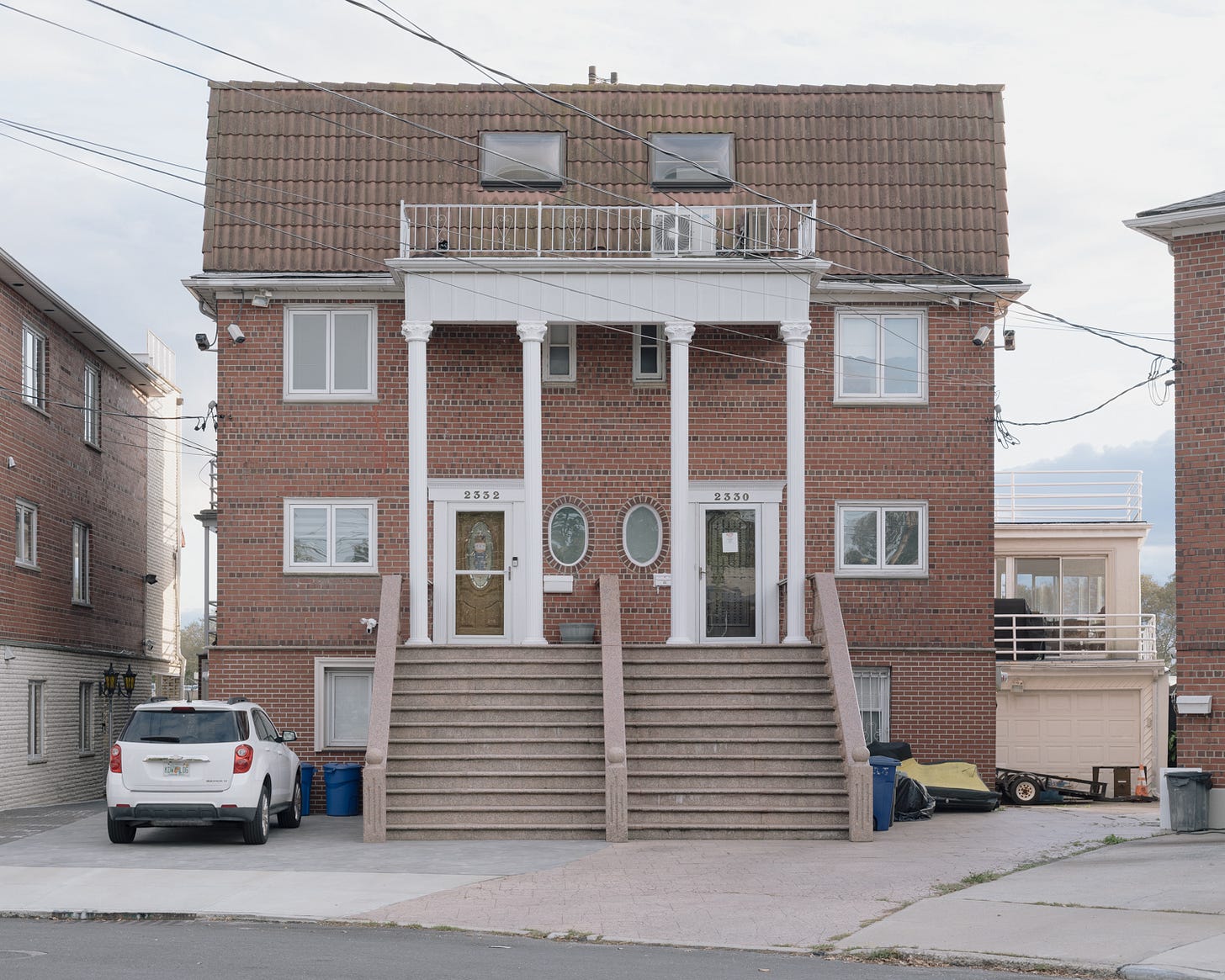

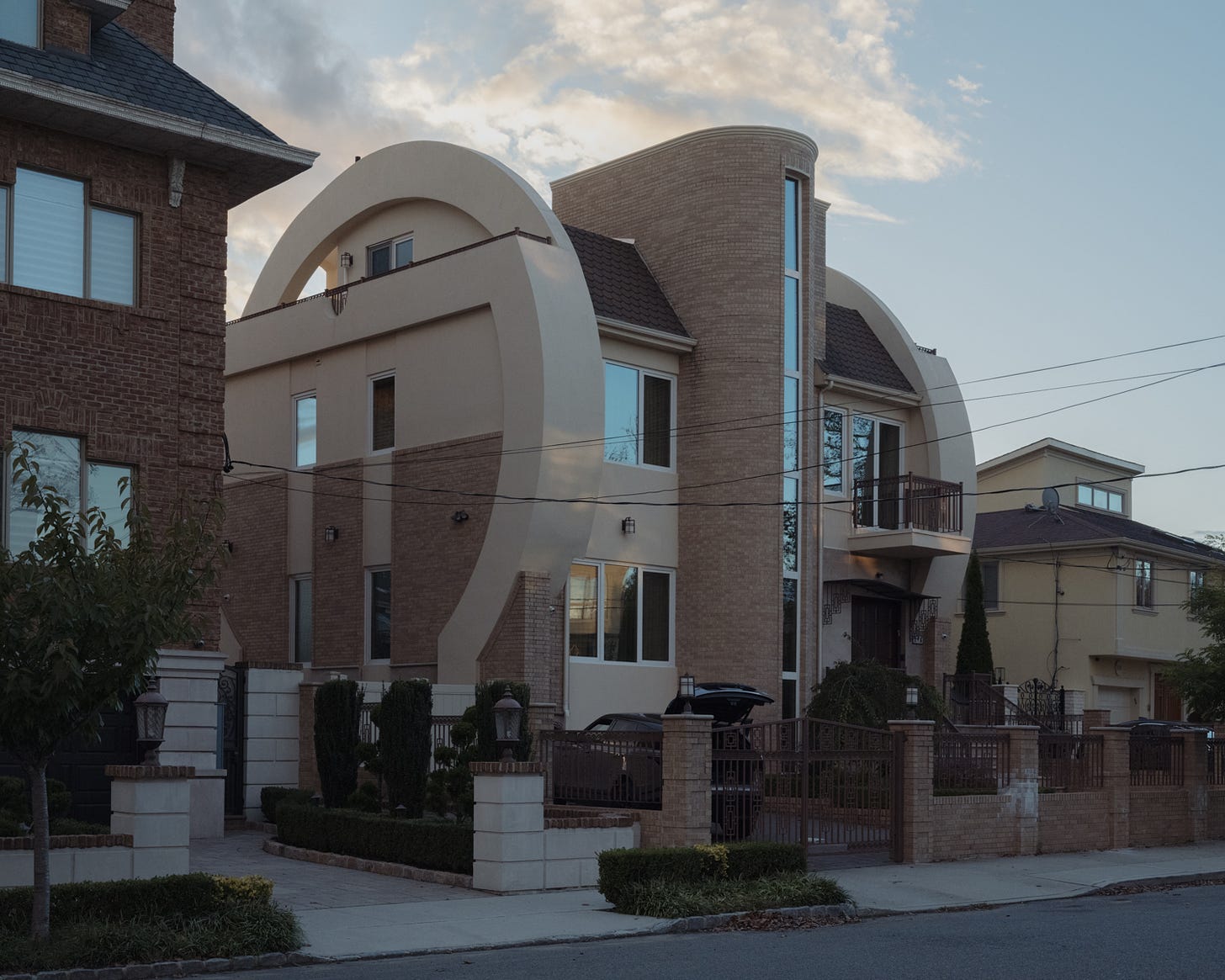
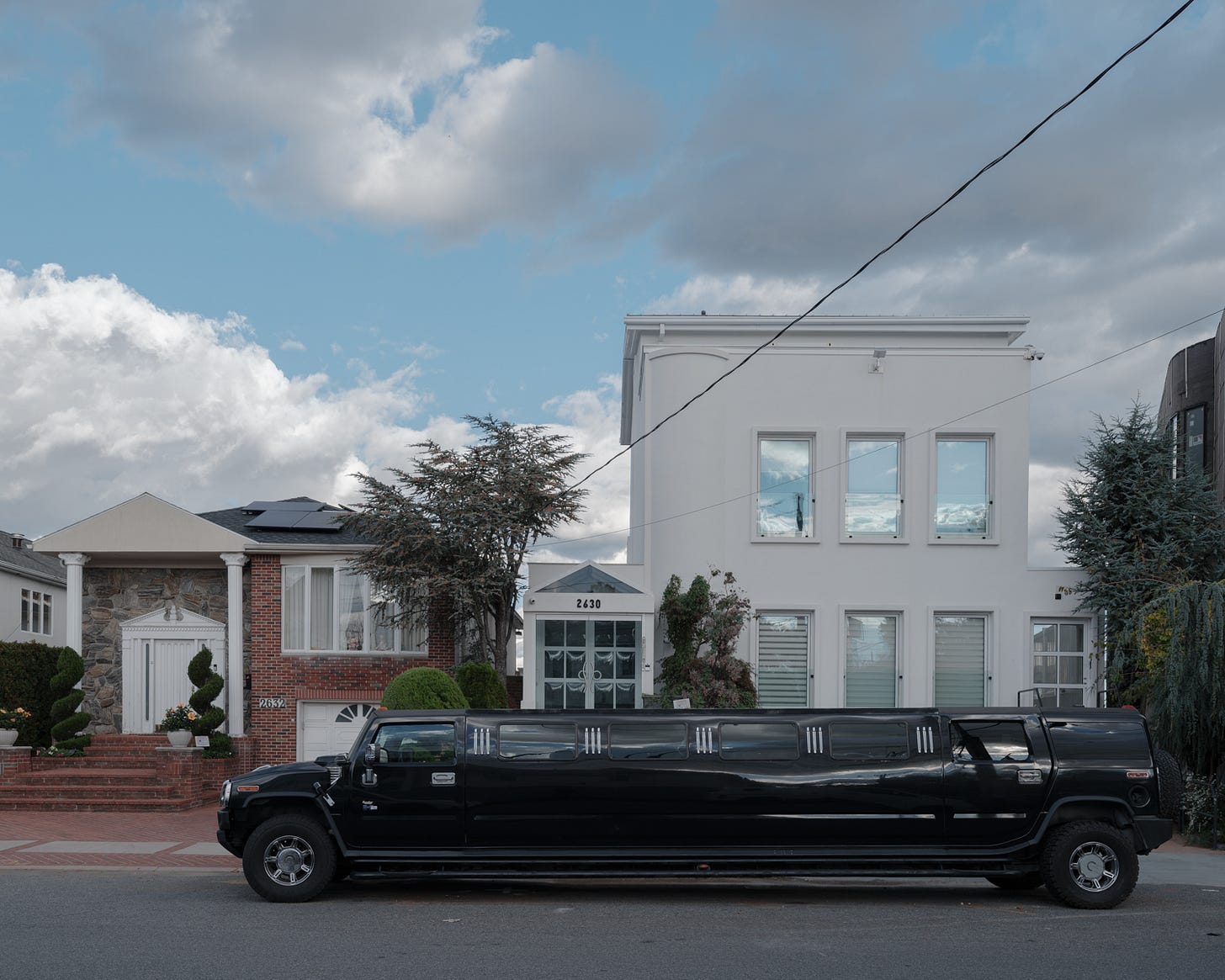
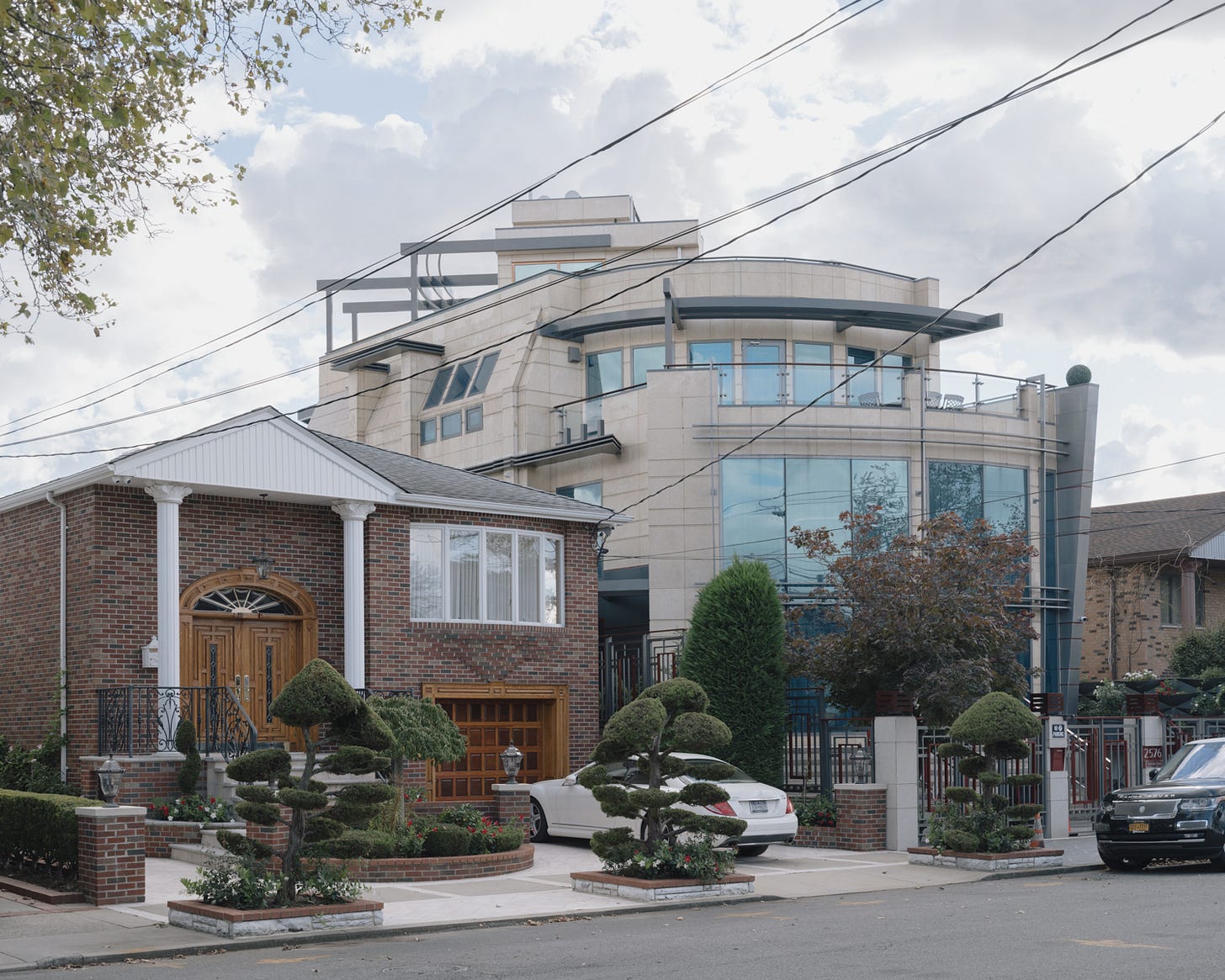
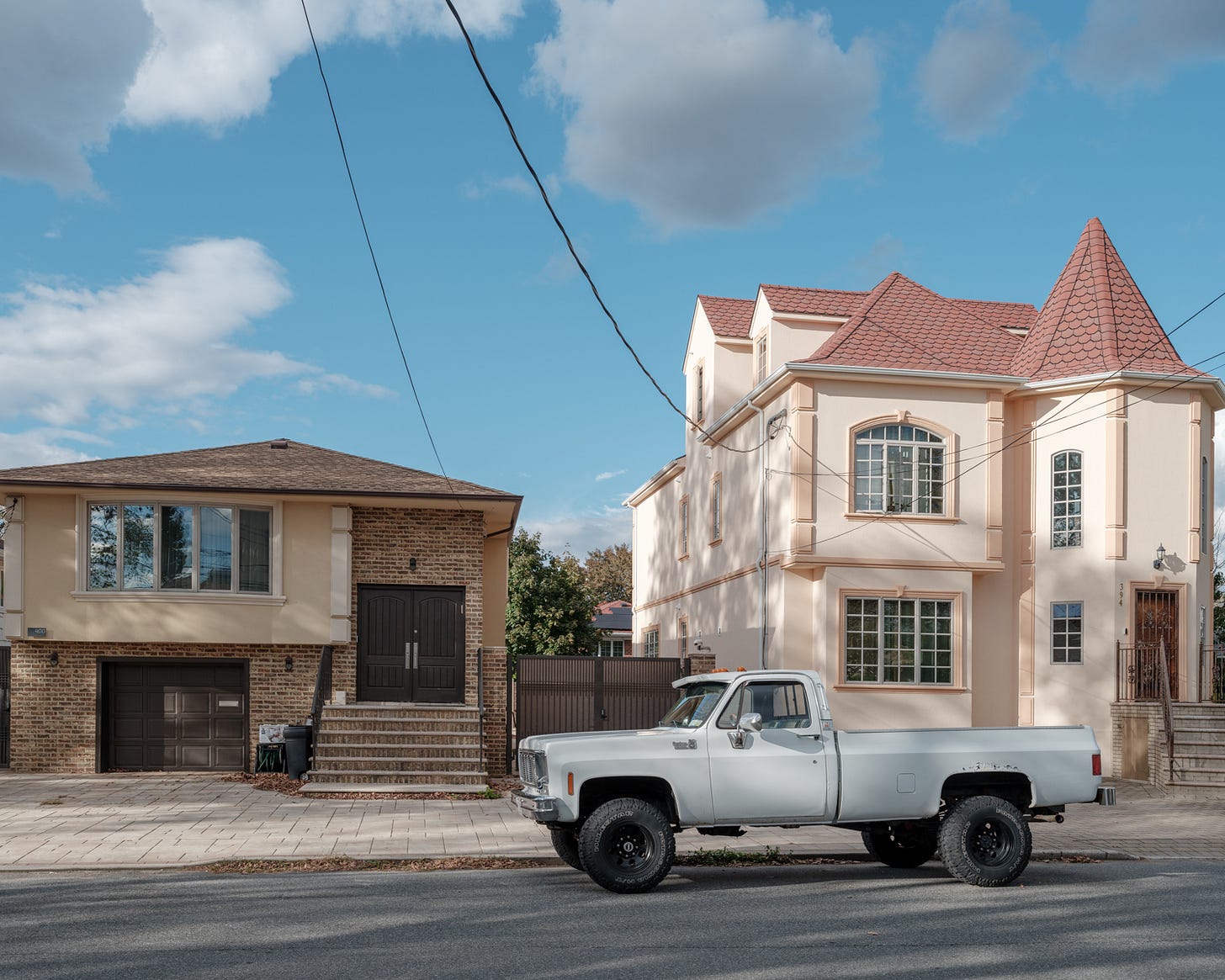
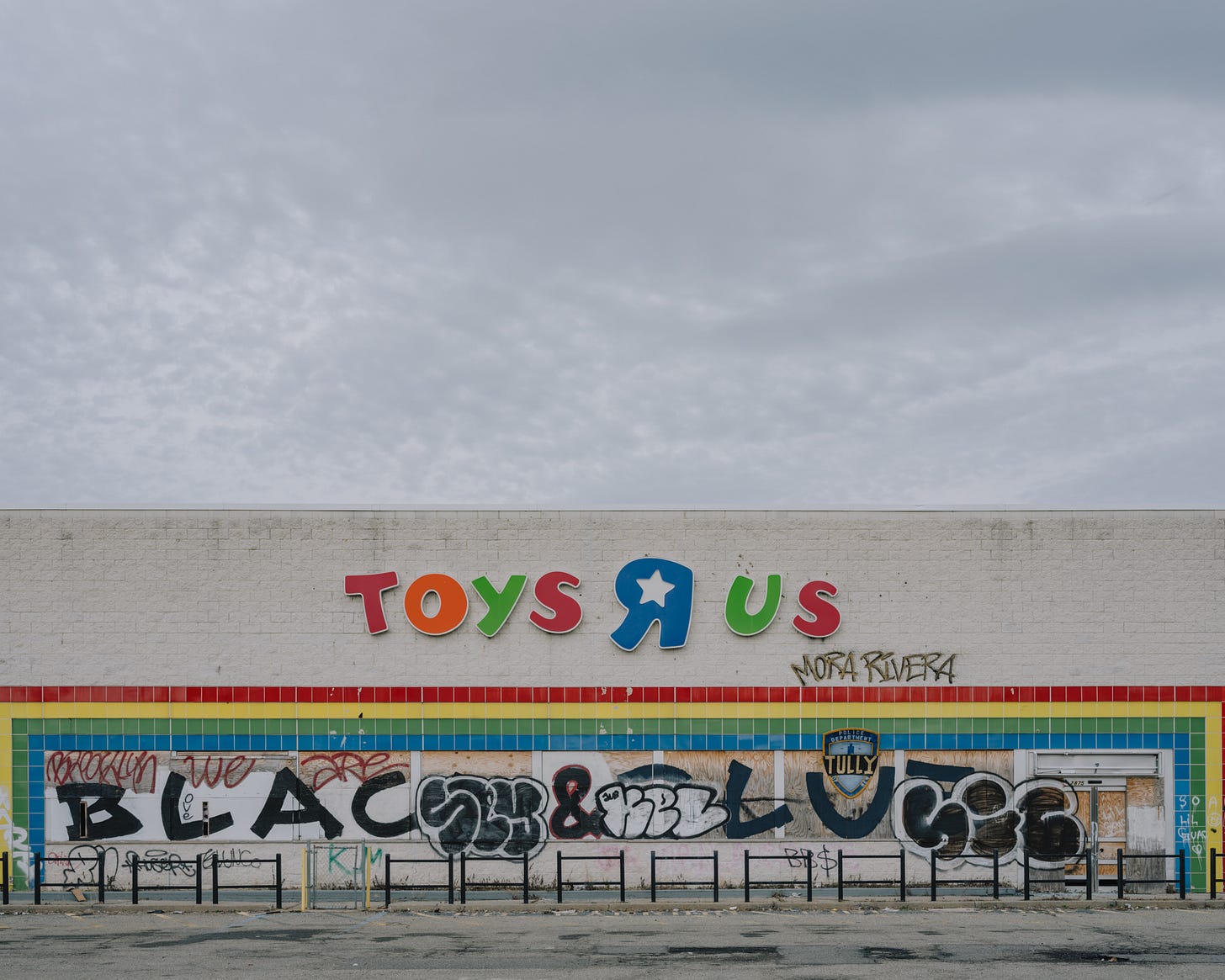
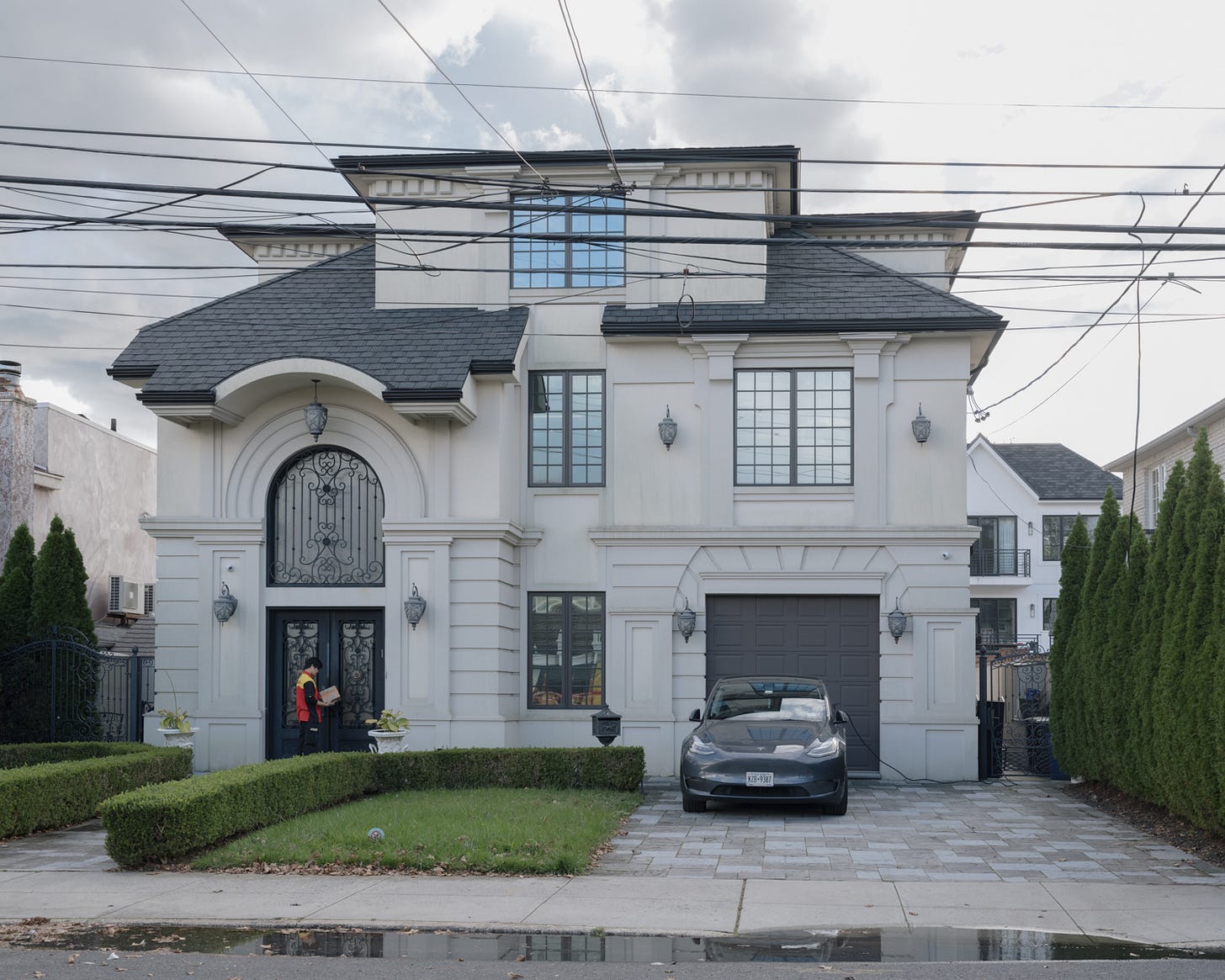
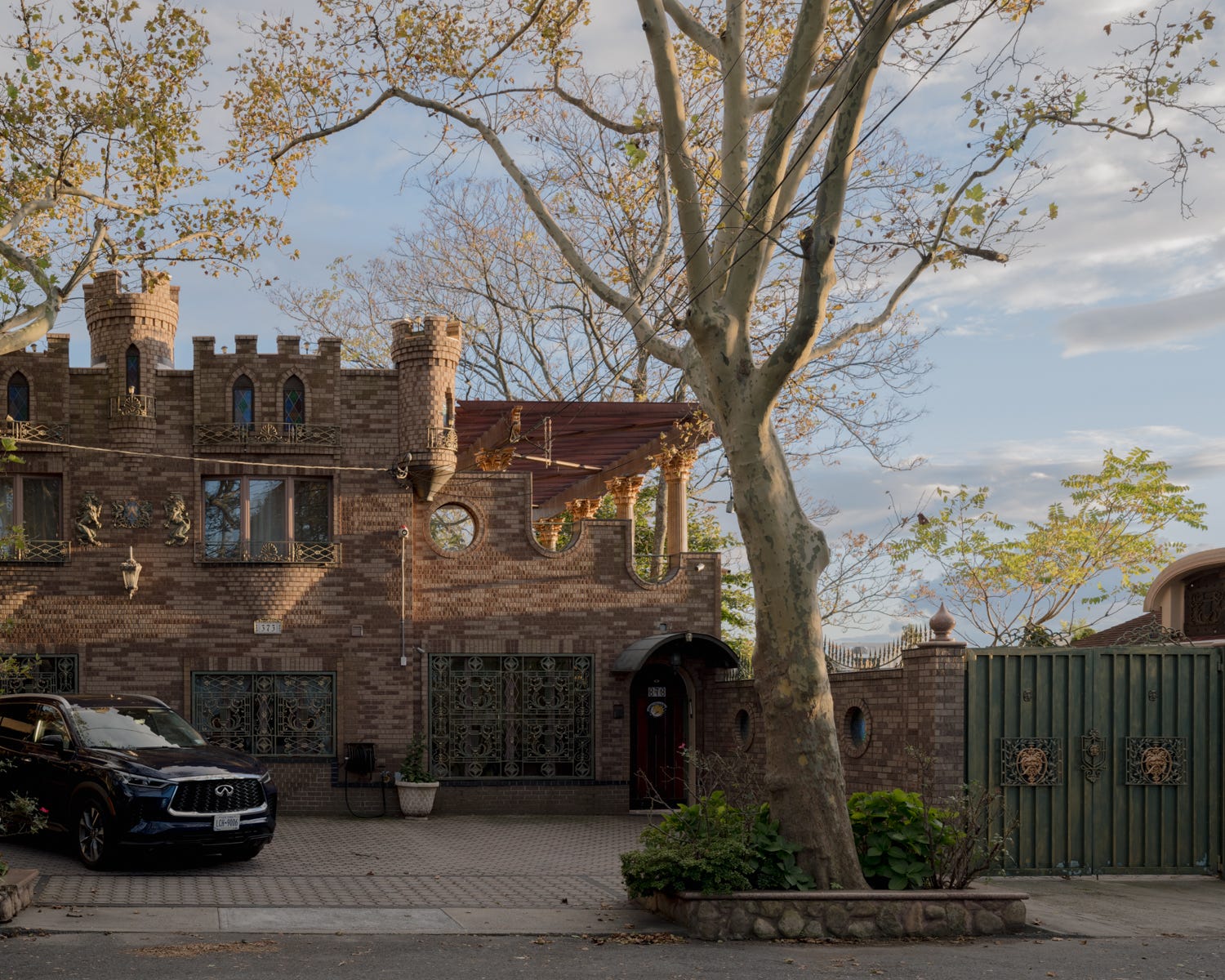
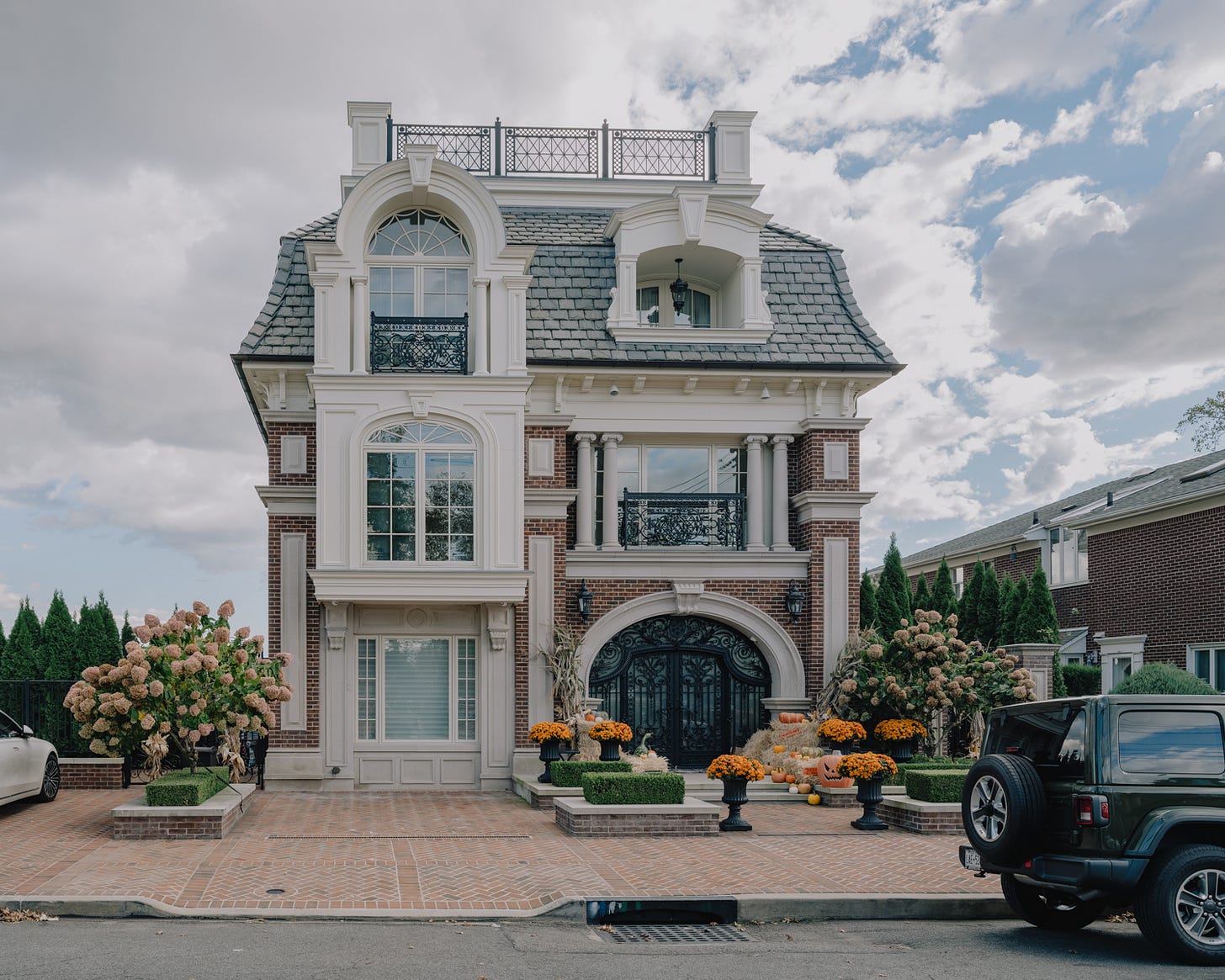
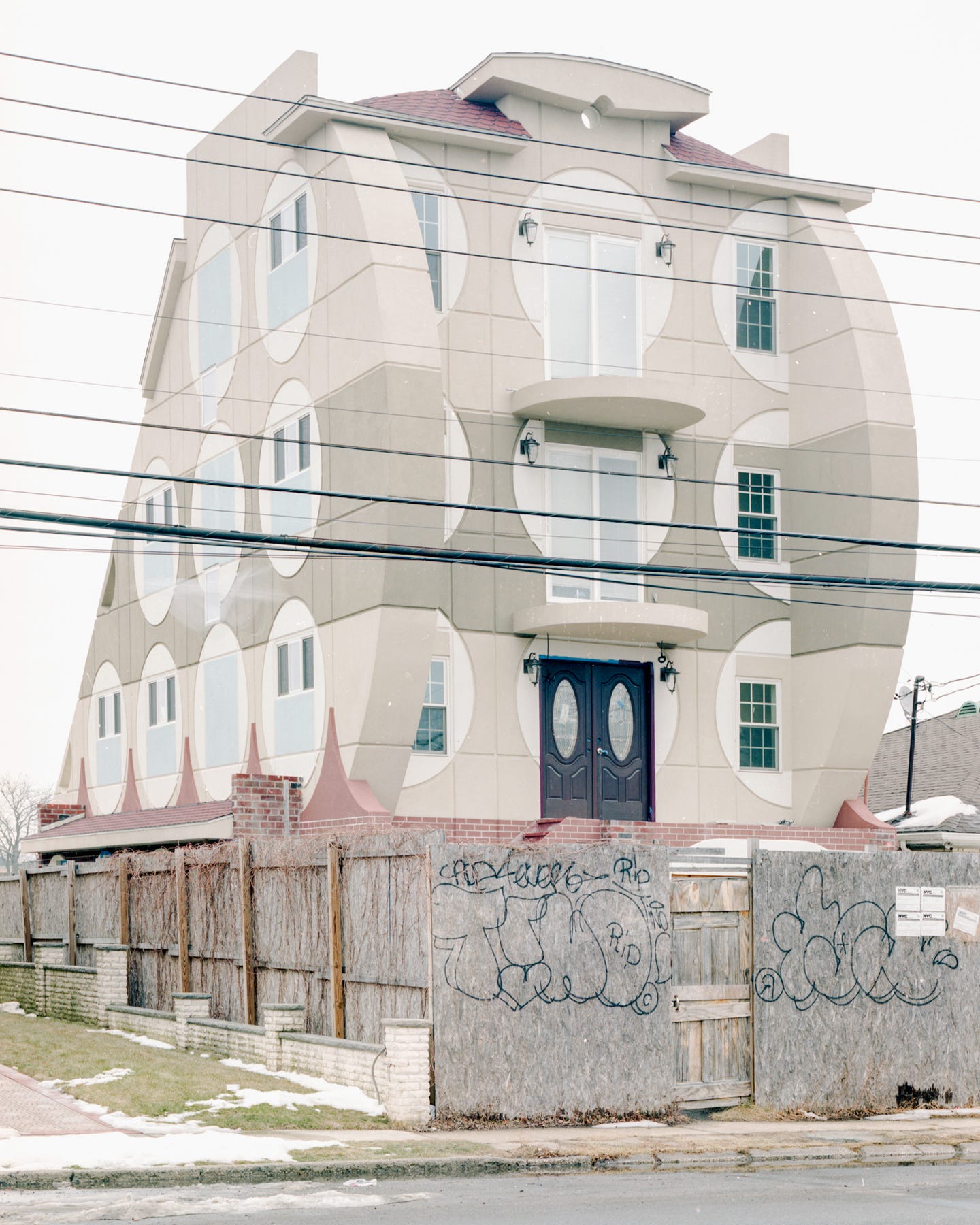
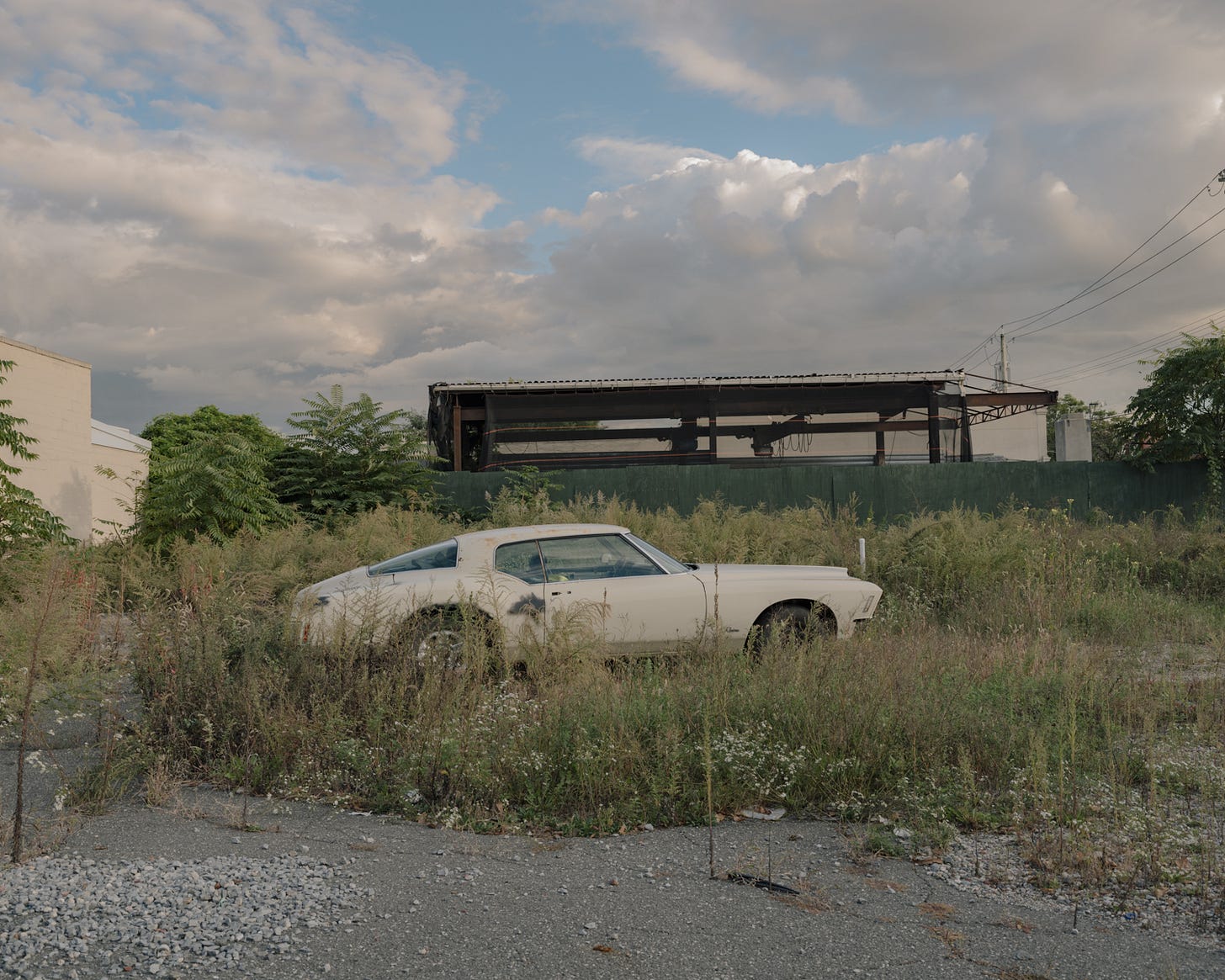
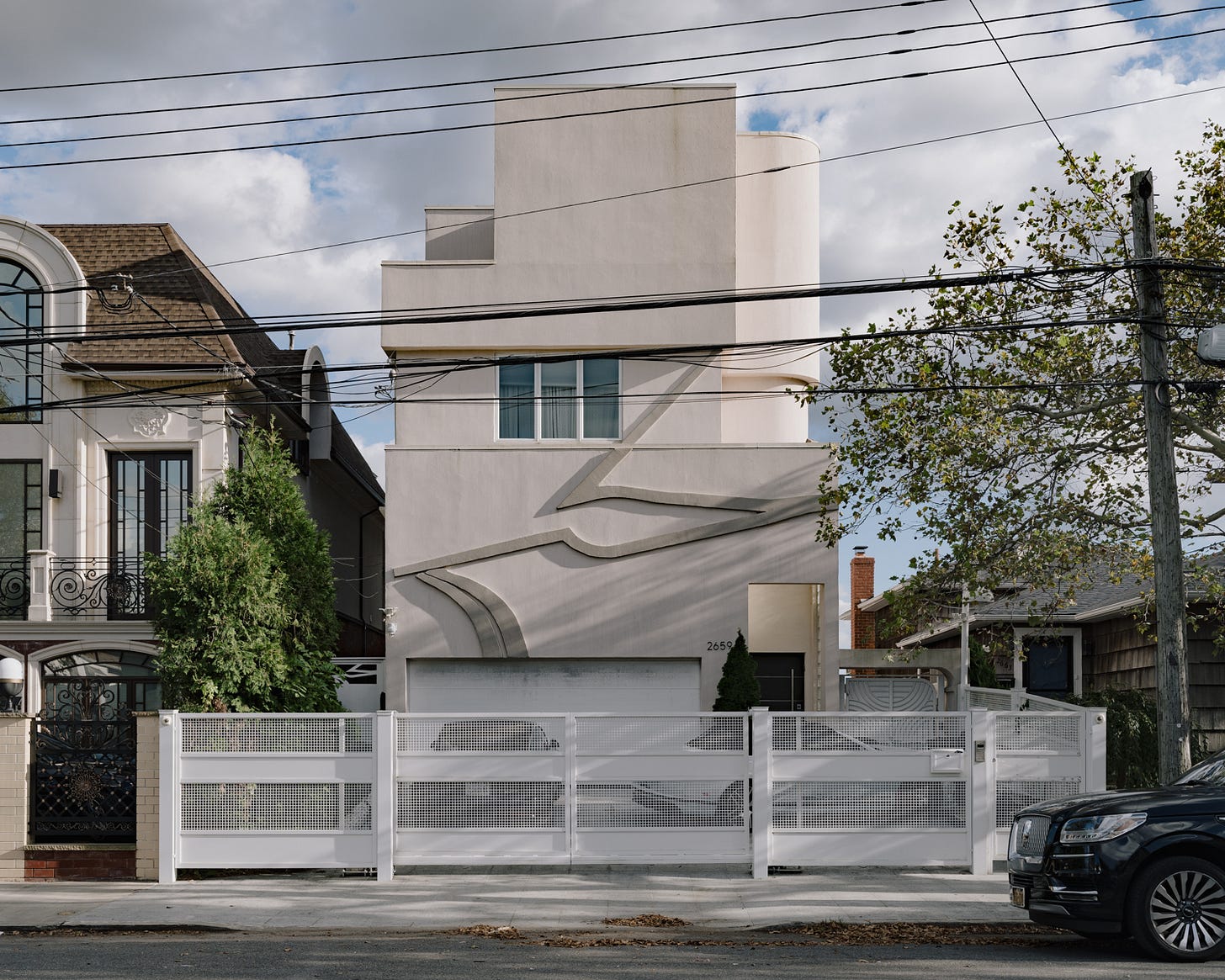

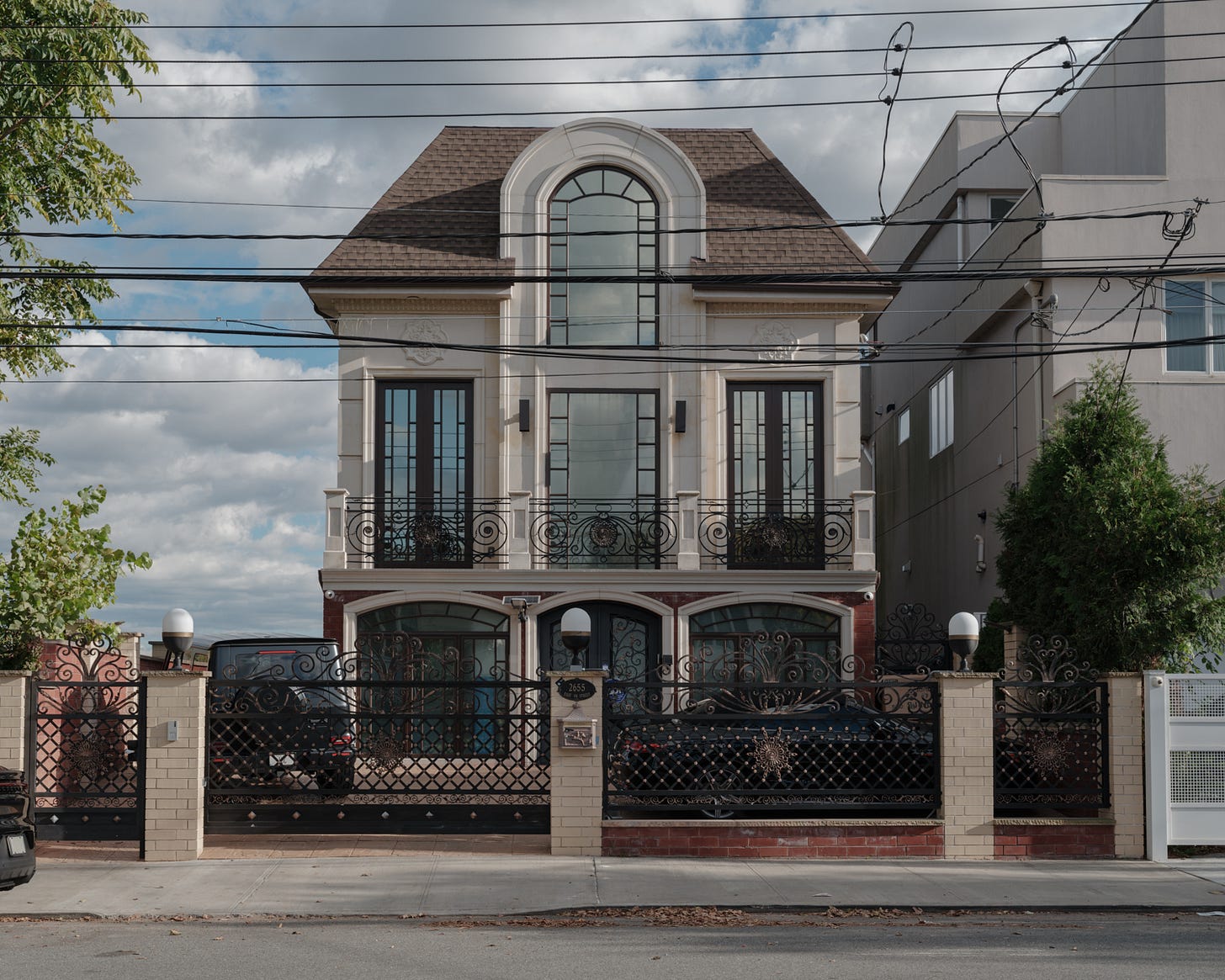
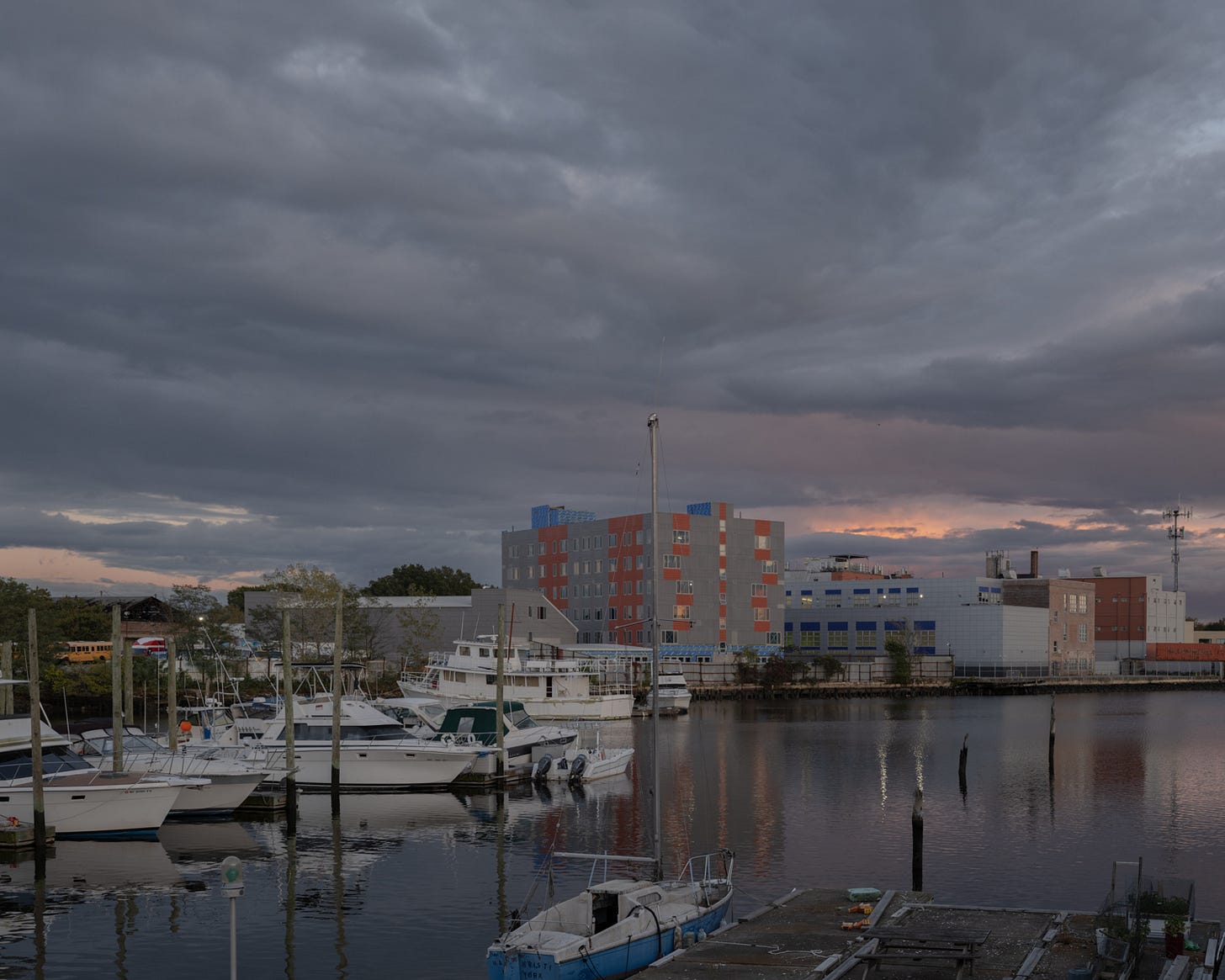

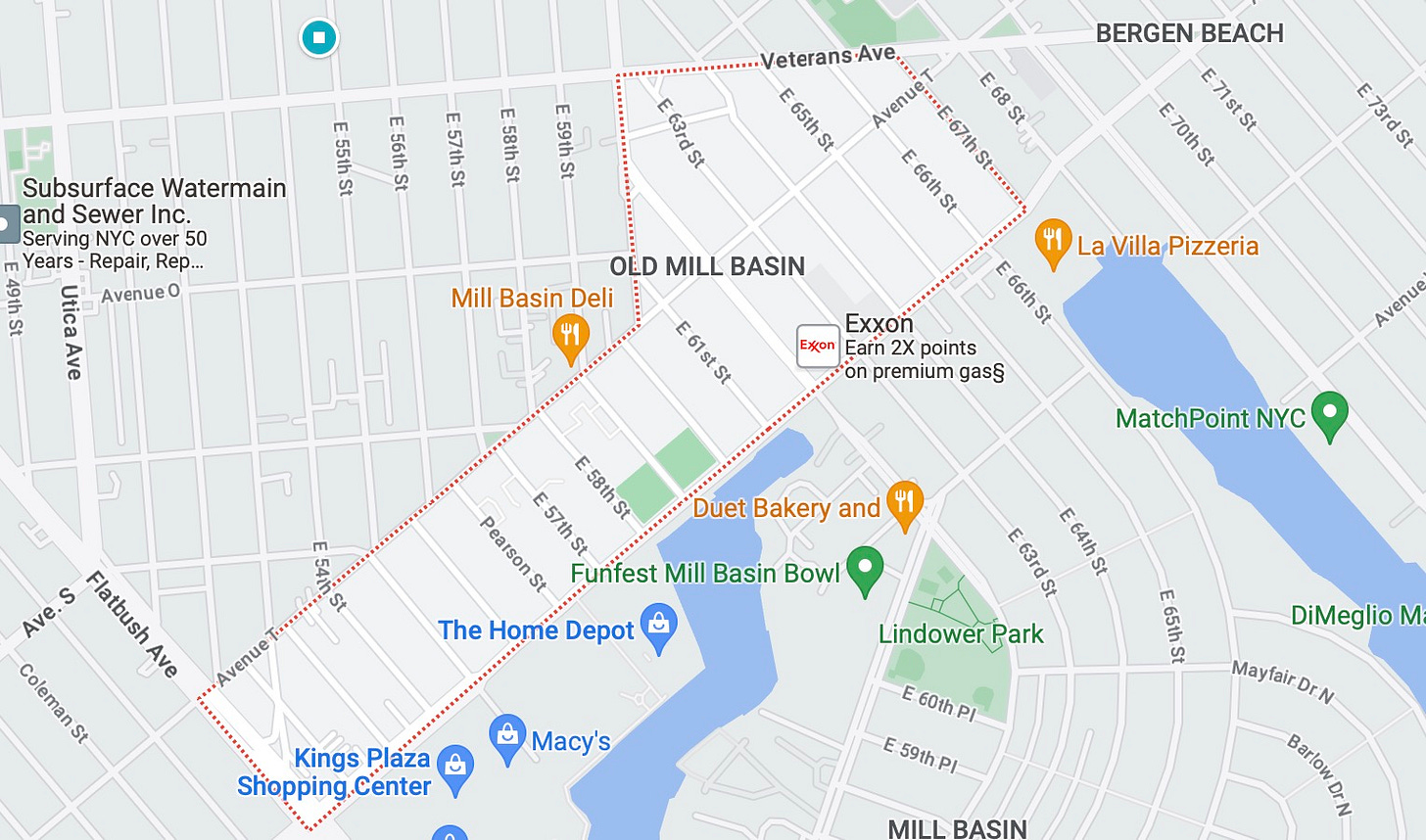
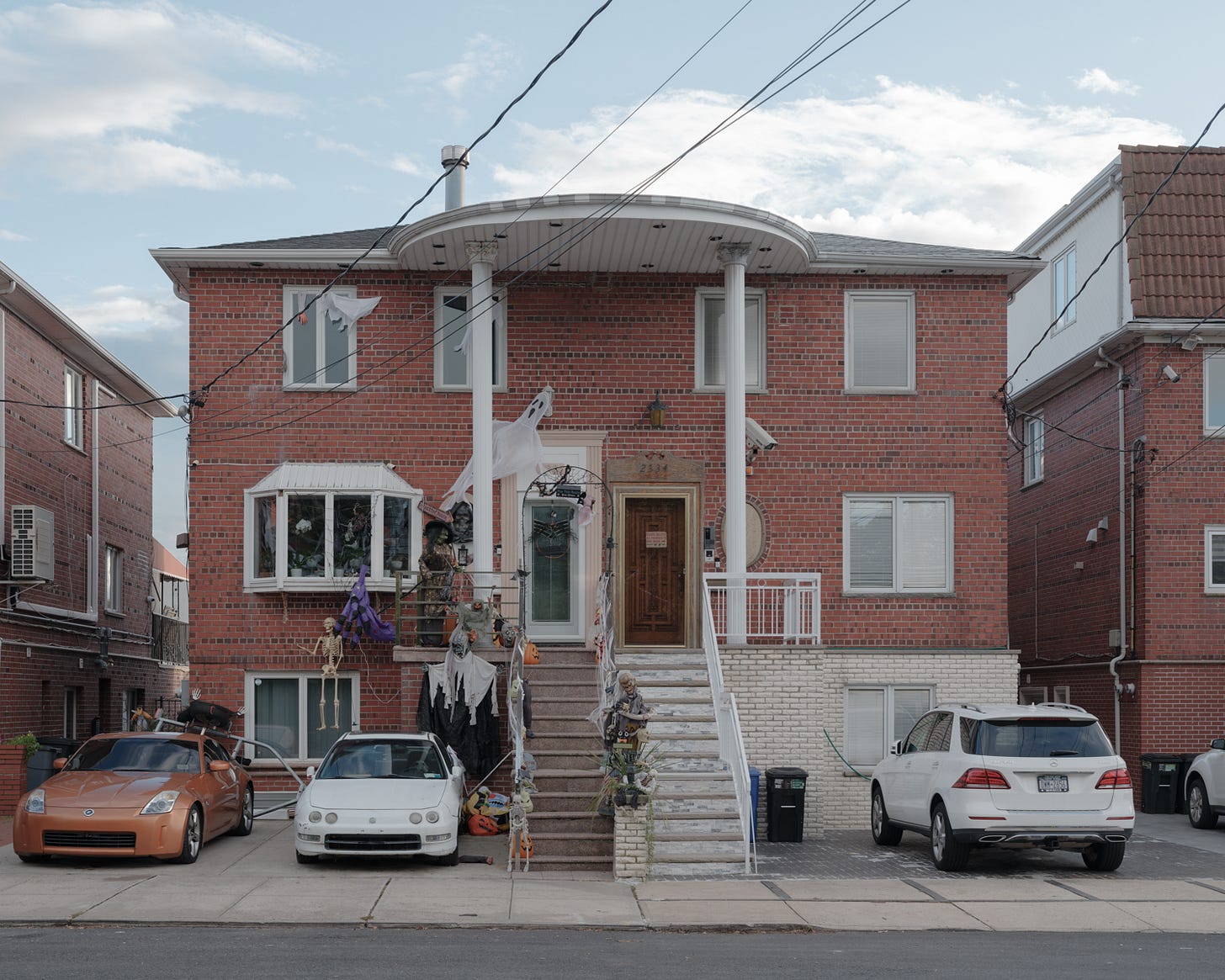
The image of the old wooden fence was such a relief in the middle of all these monstrosities... What's wrong with people (rhetoric question). I found this post because Anne Kadet linked it in her own impression of this neighborhood -- great complement.
Gotta go back for christmas lights - it rivals dyker heights
also don't forget the bar mitzvah/wedding center el caribe owned by Michael Cohen's uncle